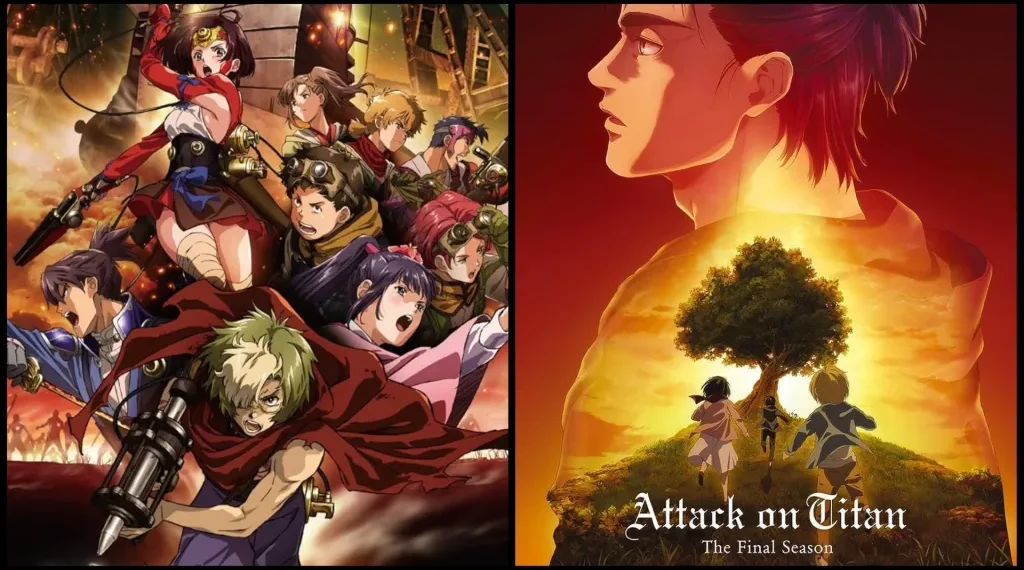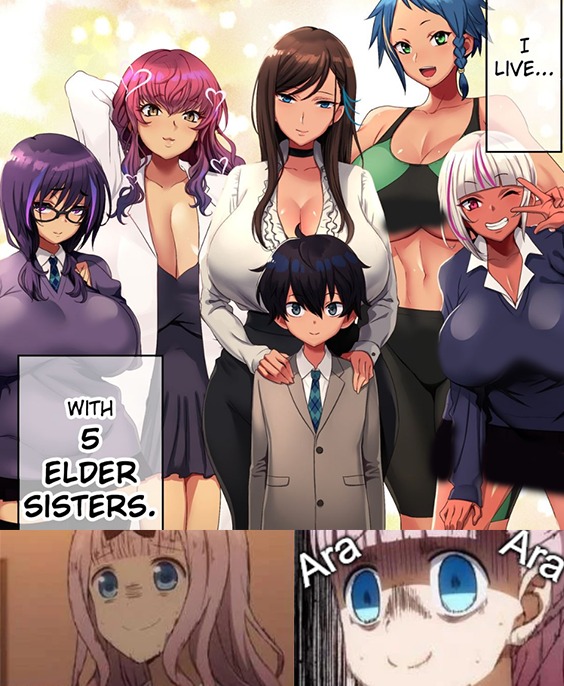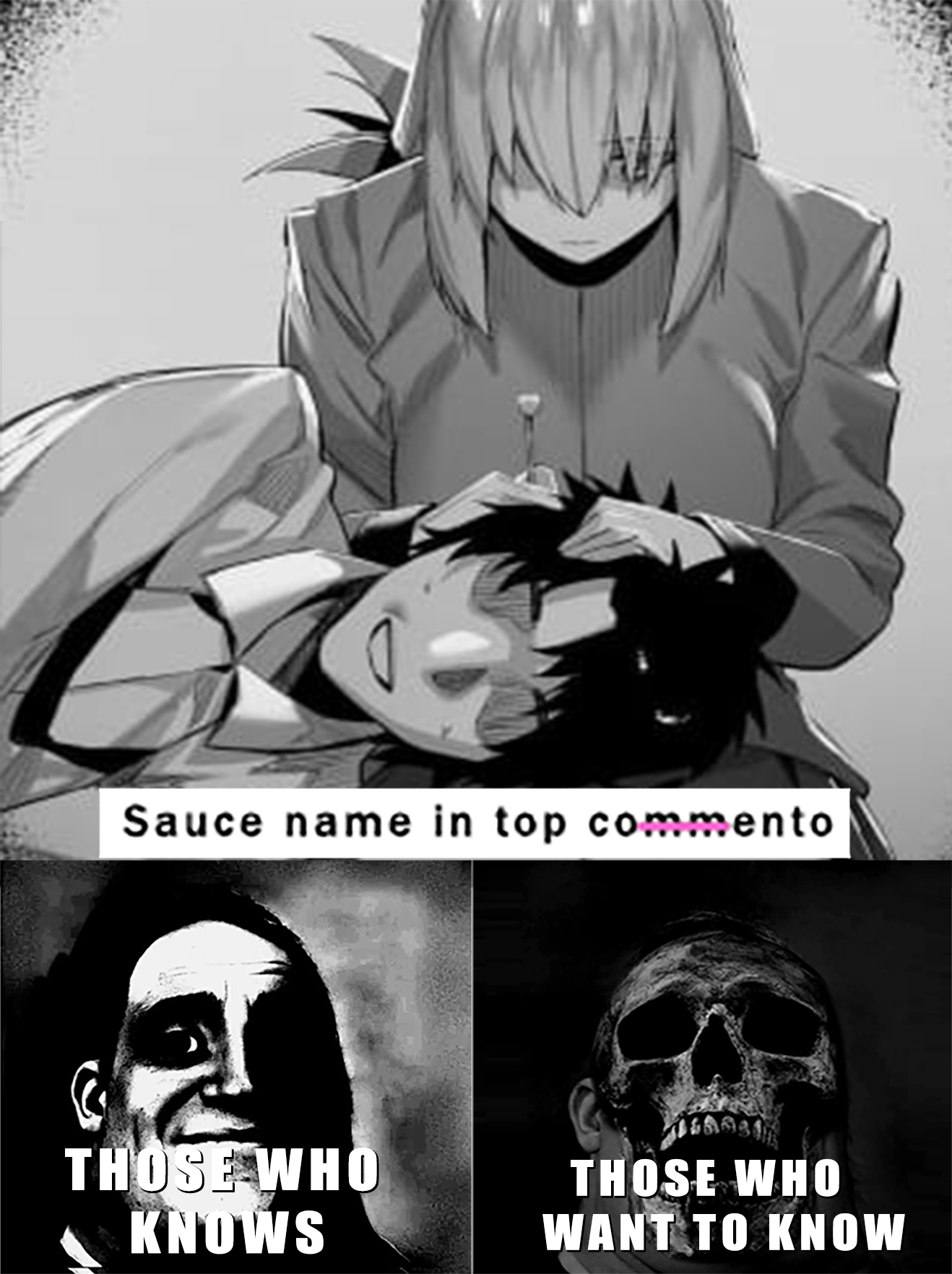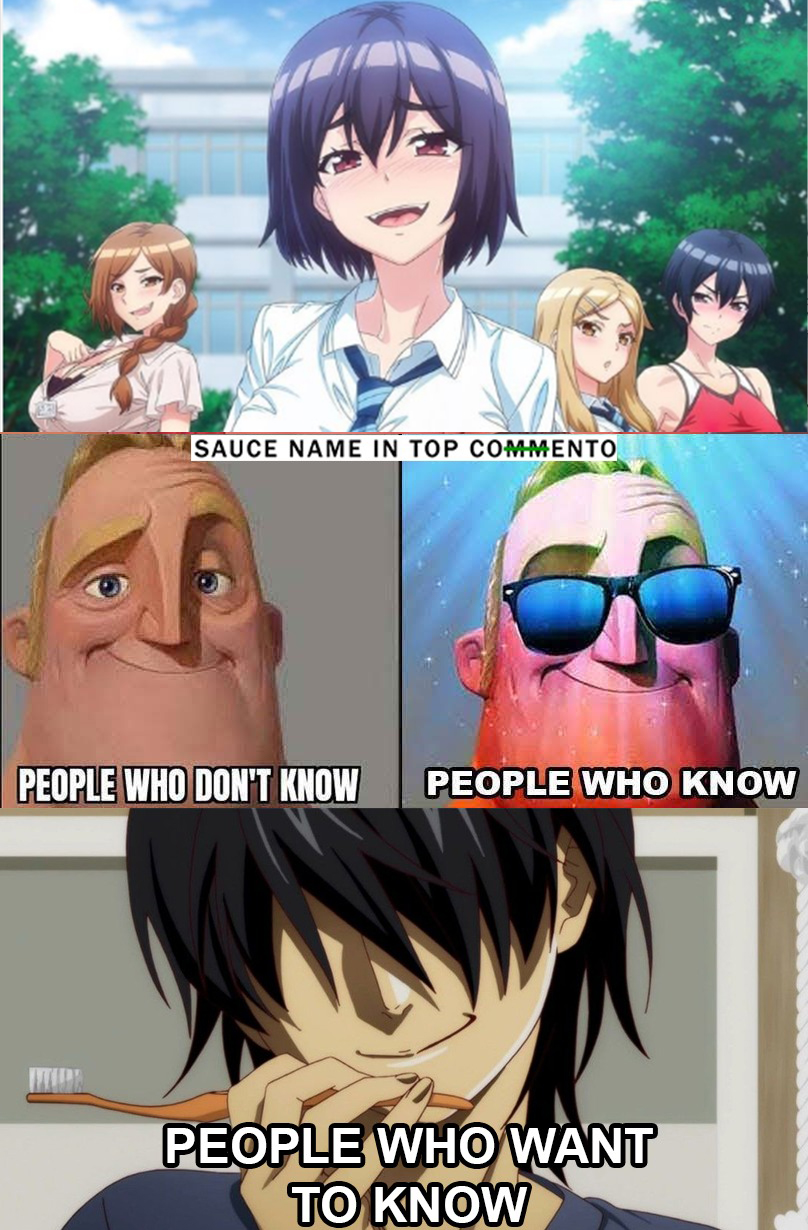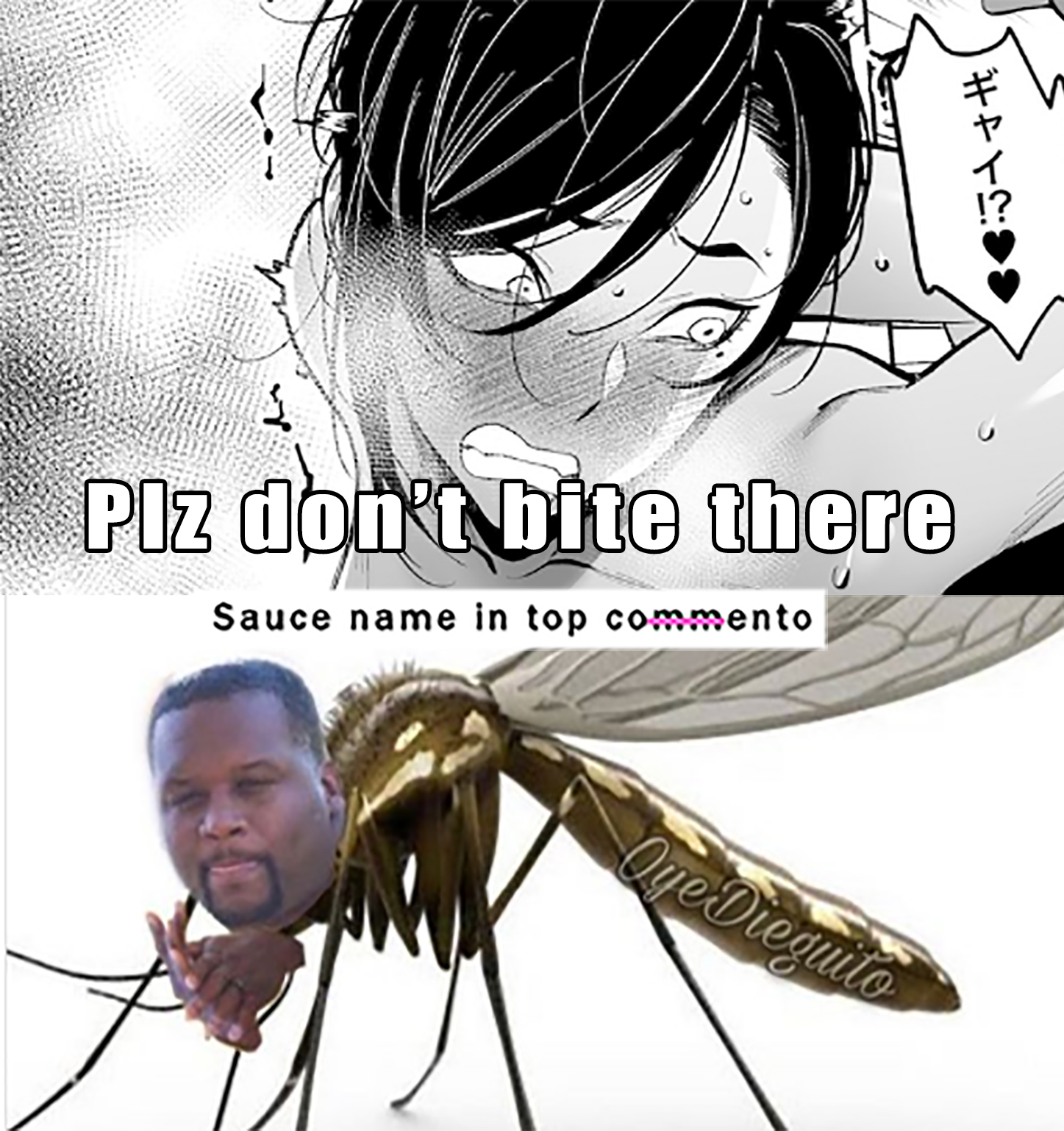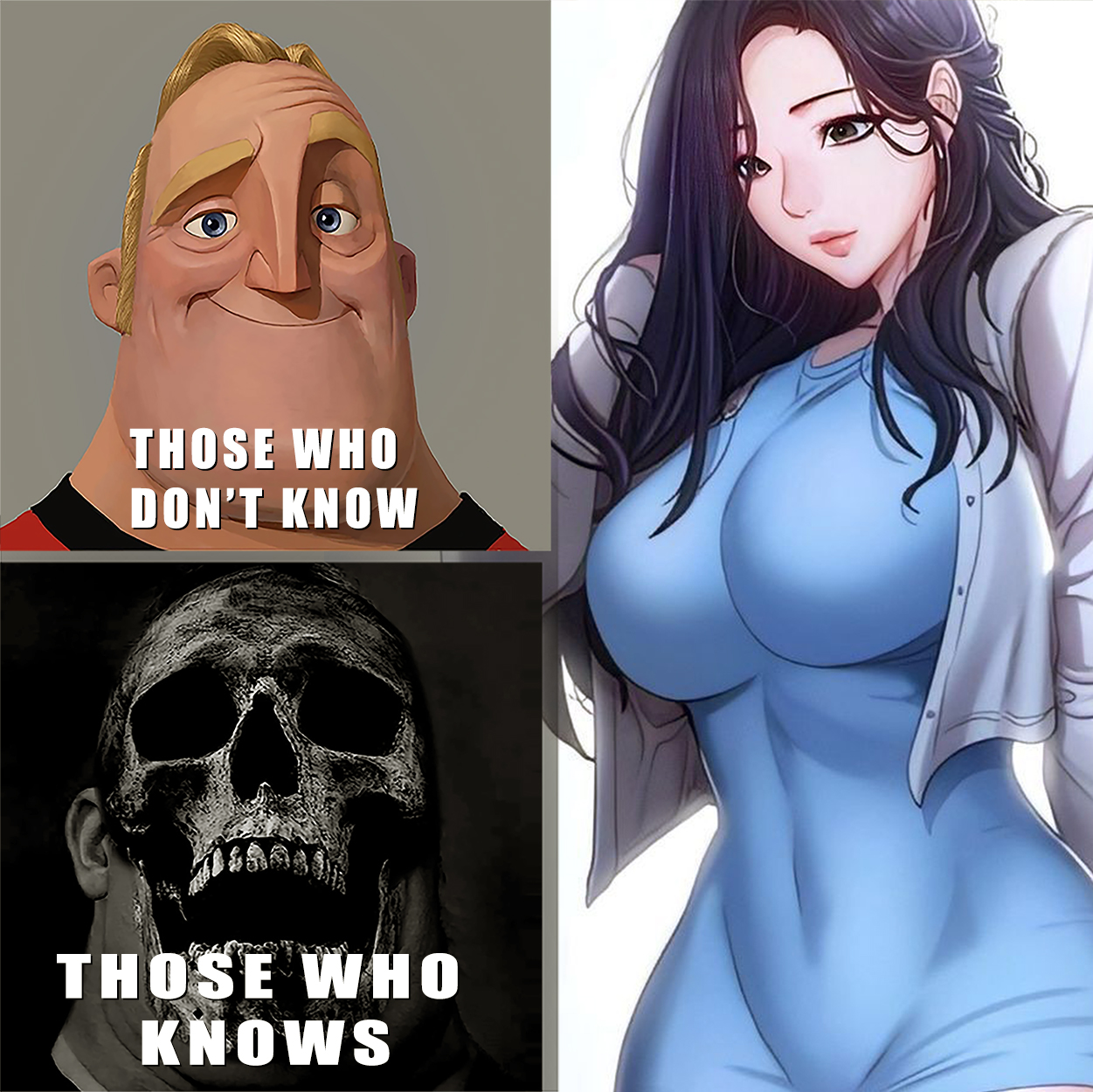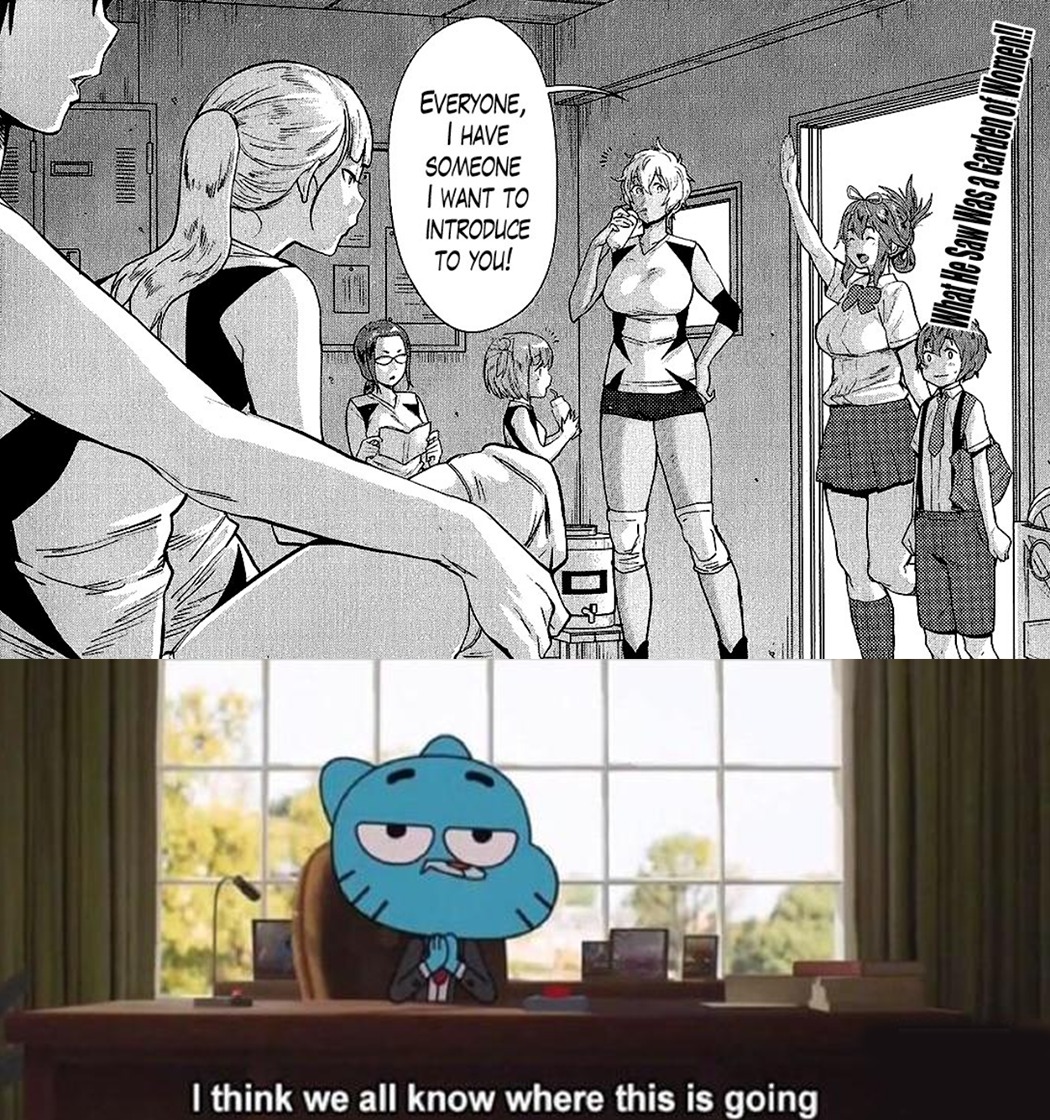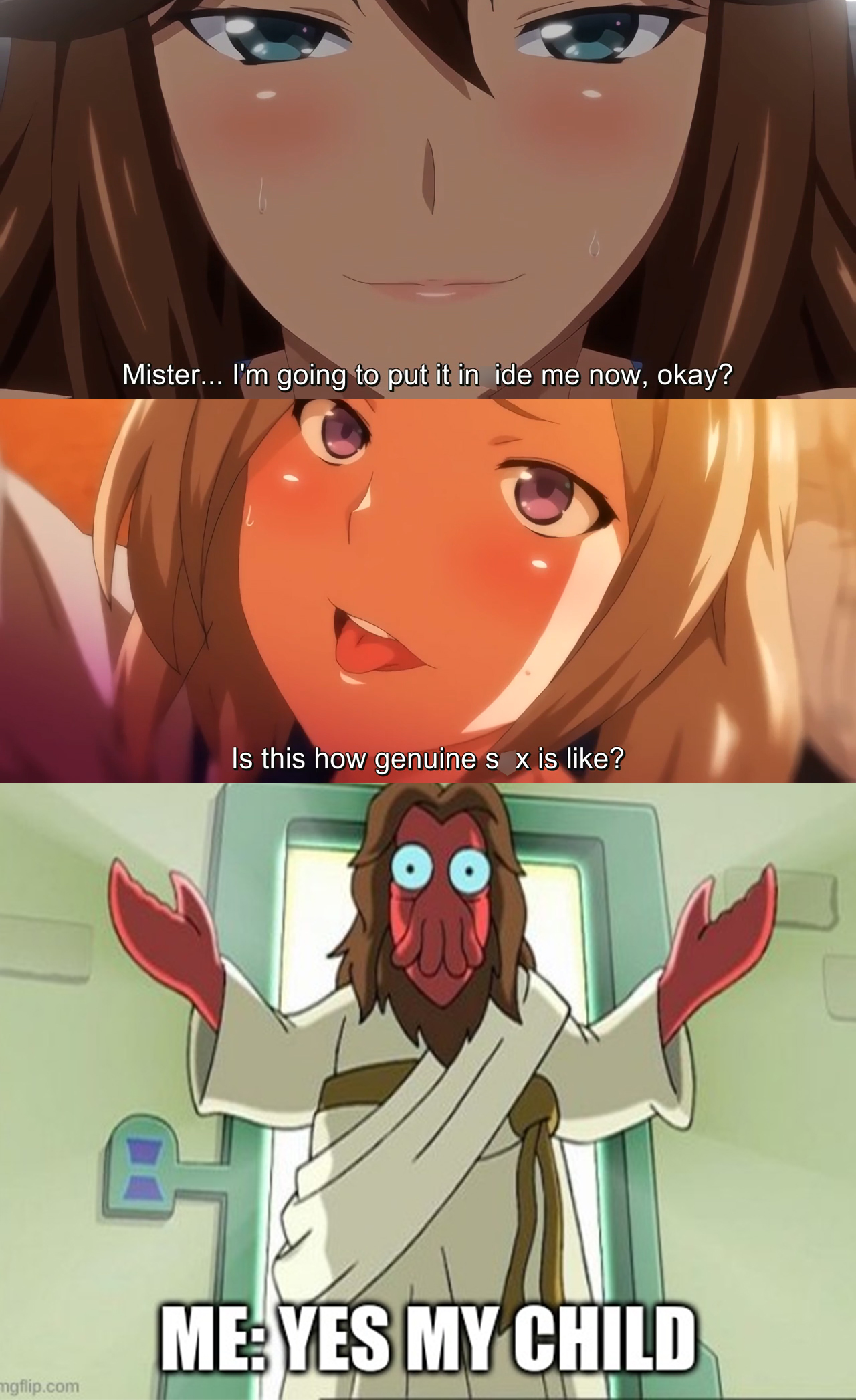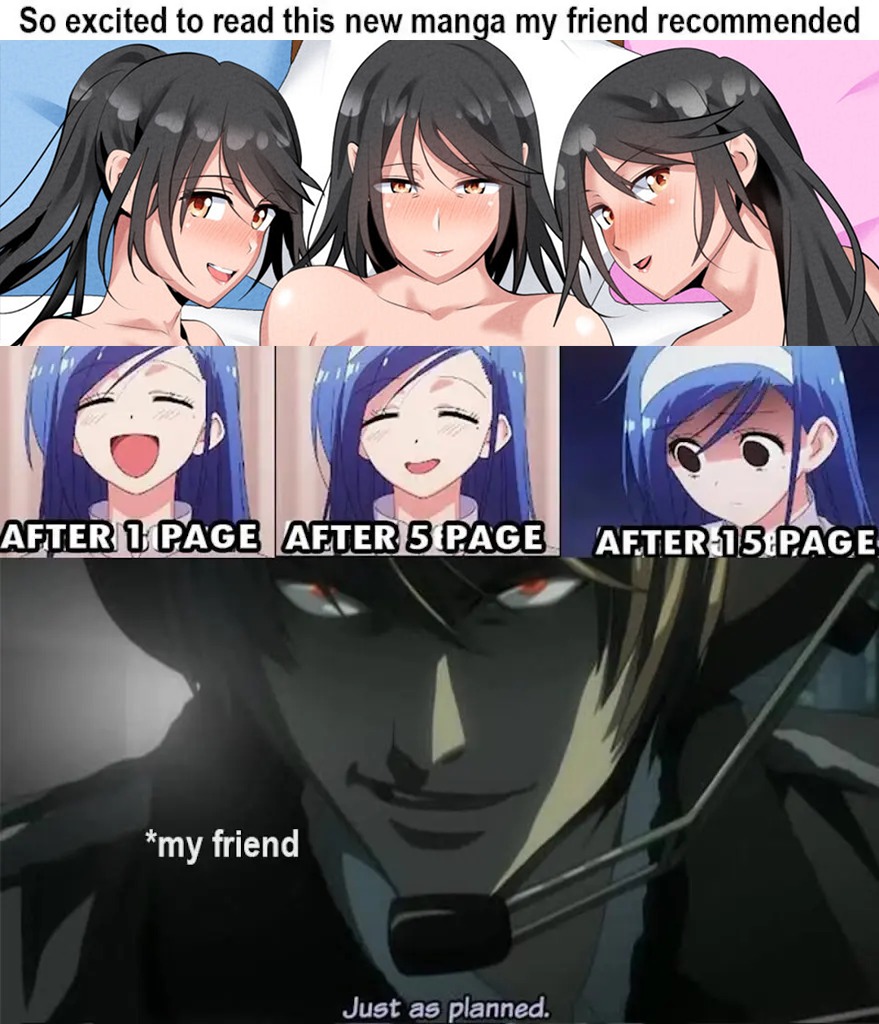goes
It’s been quite the journey for Attack on Titan, hasn’t it? With the manga wrapping up in 2021 and the anime airing its final episode in November 2023, it’s safe to say its reign as an anime phenomenon is complete. Love it or not, you can’t deny its impact. It’s sparked endless discussions and debates every step of the way.
Now that the dust has settled, fans can finally look into the entire series from start to finish without any more waiting. But fear not, for there are plenty of other long-running manga out there to sink your teeth into, offering stories just as rich and immersive.
Since 2013, Attack on Titan has been a staple in the anime world, but alas, there’s no more new content on the horizon. Thankfully, there are plenty of other anime series out there that scratch that same itch. If you had to categorize Attack on Titan, it would fall into genres like horror, action, and Kaiju, with unexpected death being a recurring theme.
So, if you’re craving that same adrenaline rush and jaw-dropping twists, there are definitely other anime out there that fit the bill. Some might even argue they’re just as good as, or even better than, Attack on Titan.
About Attack on Titan
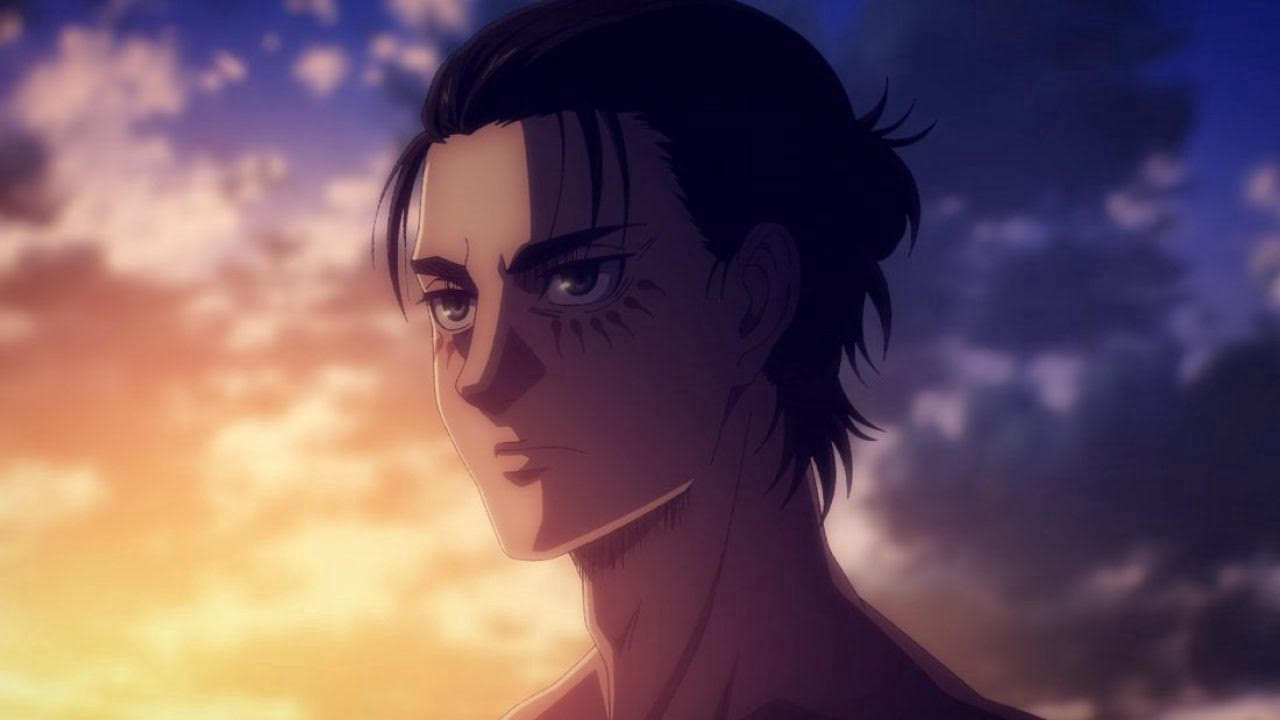
Attack on Titan is a Japanese manga series written and illustrated by Hajime Isayama. It’s set in a world where humanity resides within enormous walled cities to protect themselves from Titans, gigantic humanoid creatures that devour humans seemingly without reason.
The story primarily follows Eren Yeager, his adoptive sister Mikasa Ackerman, and their friend Armin Arlert, who join the military to fight against the Titans after their hometown is destroyed and Eren’s mother is killed by one.
The plot of “Attack on Titan” is intricate and layered, focusing not only on the physical battles against the Titans but also on the deeper mysteries surrounding their origin and the true history of humanity.
As the series progresses, it goes into complex themes such as the nature of freedom, the cycle of hatred, the consequences of war, and the lengths individuals will go to in order to survive. The story explores moral ambiguity, with characters often facing difficult choices in a harsh and unforgiving world.

One of the series’ strengths lies in its well-developed and multi-dimensional characters. Eren Yeager starts off as a hot-headed and determined protagonist driven by a desire for revenge, but he undergoes significant development throughout the series as he grapples with the harsh realities of war and his own identity.
Mikasa Ackerman is fiercely loyal to Eren, often serving as his protector, while Armin Arlert provides strategic insight and moral guidance. The supporting cast is also diverse and compelling, with each character contributing to the story in meaningful ways.
The artwork in the manga is highly detailed, with Isayama’s gritty and realistic style effectively capturing the intensity and brutality of the world.

The Titans themselves are uniquely grotesque and unsettling in design, adding to the horror elements of the series. In terms of animation, the anime adaptation produced by Wit Studio and later MAPPA is renowned for its fluid action sequences and dynamic cinematography, bringing the manga’s epic battles to life on screen.
“Attack on Titan” has garnered widespread critical acclaim and has become a cultural phenomenon both in Japan and internationally. It has won numerous awards, including the Kodansha Manga Award and the Sugoi Japan Award.
The series has also been praised for its unpredictable plot twists, intricate world-building, and thought-provoking themes. It has inspired a dedicated fanbase, as well as various spin-off manga, light novels, video games, and an anime adaptation that has helped introduce the series to a global audience.

Attack on Titan” is a nice and thought-provoking series that has left a lasting impact on the world of manga and anime. With its compelling characters, complex narrative, and stunning artwork, it has earned its place as one of the most influential and beloved franchises of the 21st century.
Whether you’re a fan of action-packed battles, deep philosophical themes, or gripping storytelling, “Attack on Titan” offers something for everyone and is well worth experiencing.
10. God Eater
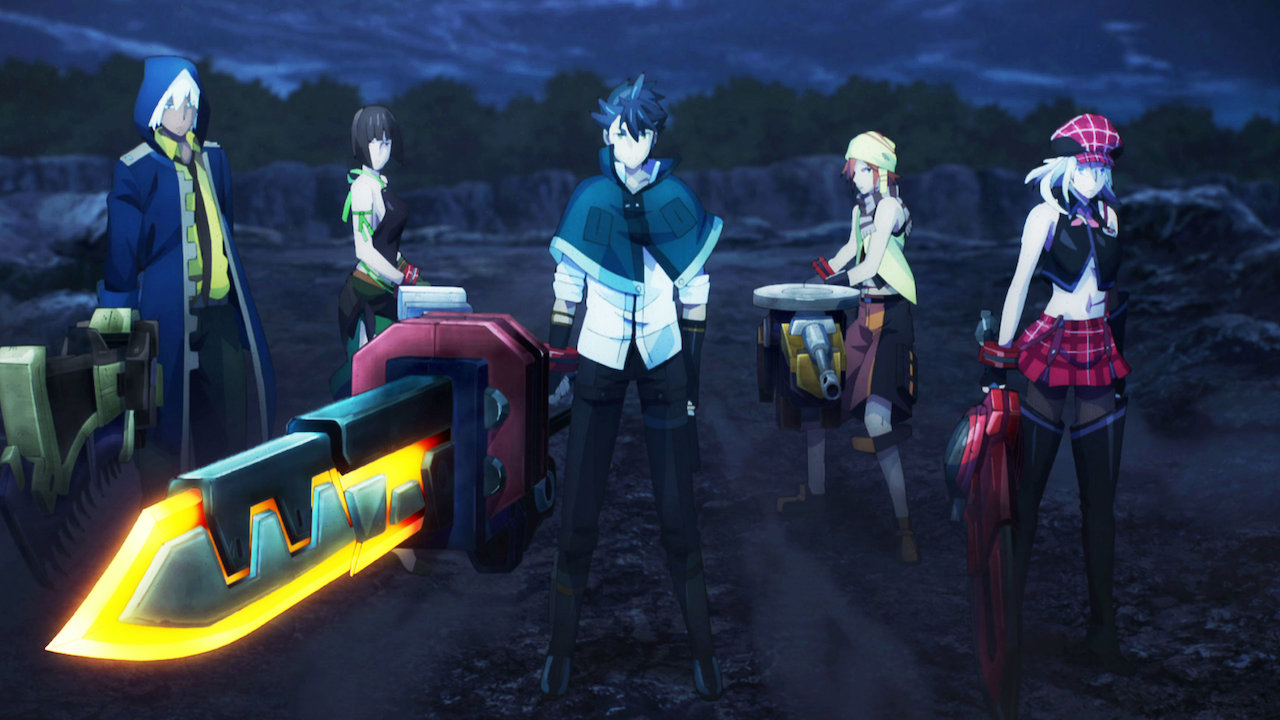
Ufotable’s adaptation of Bandai Namco’s RPG series delivers a thrilling experience filled with spectacular action sequences and an air of mystery that envelops both its characters and the world they inhabit. Set in an alternate future where Earth is plagued by colossal creatures known as Aragami, the members of Fenrir are entrusted with specialized weapons to combat these monsters and safeguard humanity.
While the narrative of God Eater may take some time to build momentum, and its characters may not leave a lasting impression, the series compensates with its hallmark: breathtaking action. Ufotable’s expertise shines through in the execution of unforgettable battle sequences, ensuring that God Eater remains a fascinating spectacle despite any narrative shortcomings.
“God Eater” is a franchise that has gained significant attention in anime, manga, and video games. Let’s dive into its intricate world, exploring its origins, key components, and what makes it so compelling.
The “God Eater” franchise originated as a video game series developed by Shift and published by Bandai Namco Entertainment. The first game, titled “God Eater,” was released in Japan in 2010 for the PlayStation Portable (PSP) platform.
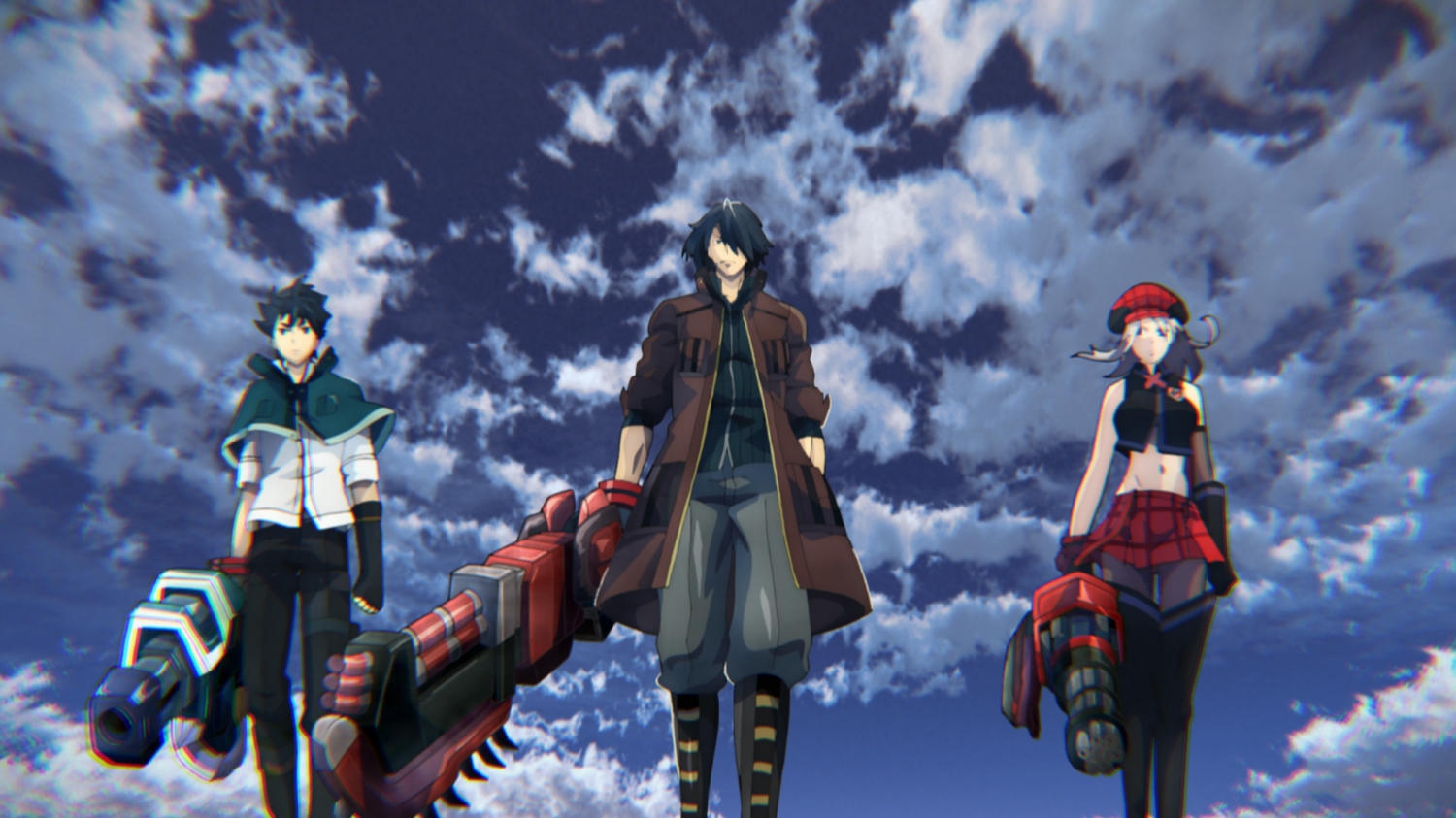
It quickly gained popularity for its dynamic gameplay, intriguing storyline, and unique art style. The success of the initial game led to the development of sequels, spin-offs, and adaptations across various media platforms.
At its core, “God Eater” is an action role-playing game (RPG) set in a post-apocalyptic world overrun by monstrous creatures known as Aragami. Players take on the role of elite warriors called God Eaters, equipped with special weapons known as God Arcs, which are the only weapons effective against the Aragami.
The gameplay revolves around fast-paced combat, where players engage in intense battles against these formidable foes while revealing the mysteries of the world.
One of the defining features of the gameplay is the versatility of the God Arcs, which can transform between melee and ranged forms, allowing for various combat strategies. Additionally, players can customize their characters and God Arcs, enhancing their abilities and tailoring their playstyle to suit their preferences.
The narrative of “God Eater” is set in a dystopian future where the world has been ravaged by a cataclysmic event known as the “Black Plague.” This plague gave rise to the Aragami, monstrous entities that consume all in their path.
Humanity’s last hope lies with the members of the Fenrir Organization, a group of elite soldiers known as God Eaters. The story follows the protagonist, a new recruit to the organization, as they go on missions to eliminate Aragami threats and uncover the truth behind the apocalypse.
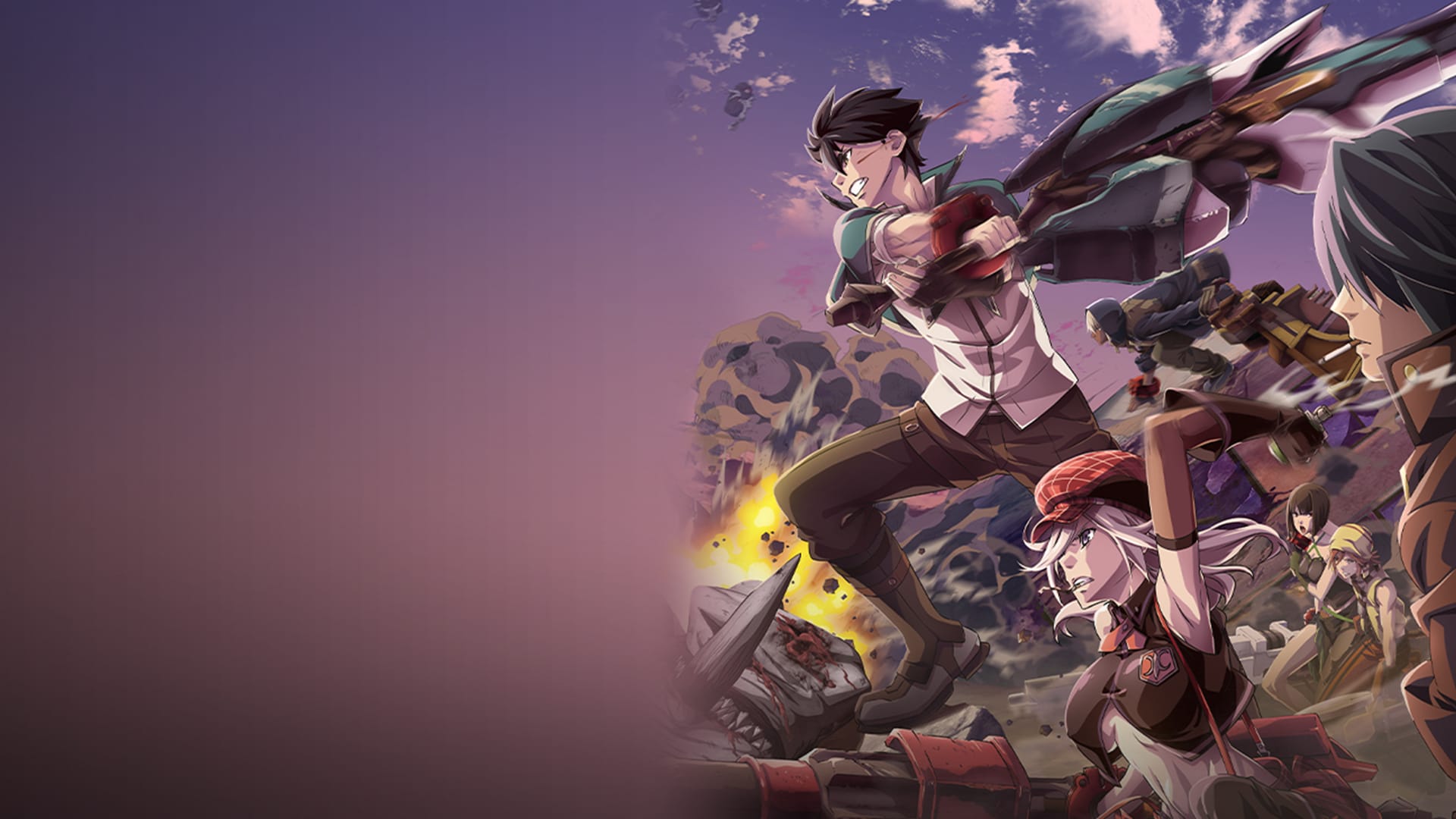
The narrative is rich in lore, with themes of survival, sacrifice, and the resilience of the human spirit prevalent throughout. As players progress through the game, they encounter a diverse cast of characters, each with their own motivations, backstories, and personalities, adding depth to the experience.
Beyond the video games, the “God Eater” franchise has expanded into other forms of media, including anime, manga, and novels. The anime adaptation, produced by Ufotable, premiered in 2015 and received praise for its stunning animation and faithful adaptation of the source material.
The manga series, written and illustrated by various artists, further explores the world of “God Eater” and goes into side stories and character development not covered in the games or anime.
God Eater” has garnered positive reviews from both critics and fans alike, praised for its engaging gameplay, compelling story, and stylish presentation. The franchise has cultivated a dedicated fanbase worldwide, with its blend of action, adventure, and post-apocalyptic themes resonating with audiences across different cultures.
God Eater stands as a franchise that has left a lasting impression on the world of gaming and entertainment. With its immersive gameplay, intricate storytelling, and rich universe, it continues to grab audiences and inspire new iterations across various media platforms.
Whether you’re a fan of action-packed RPGs, compelling narratives, or immersive world-building, “God Eater” offers an experience that is sure to satisfy your cravings for adventure in a post-apocalyptic world besieged by monstrous foes.
9. Ragna Crimson
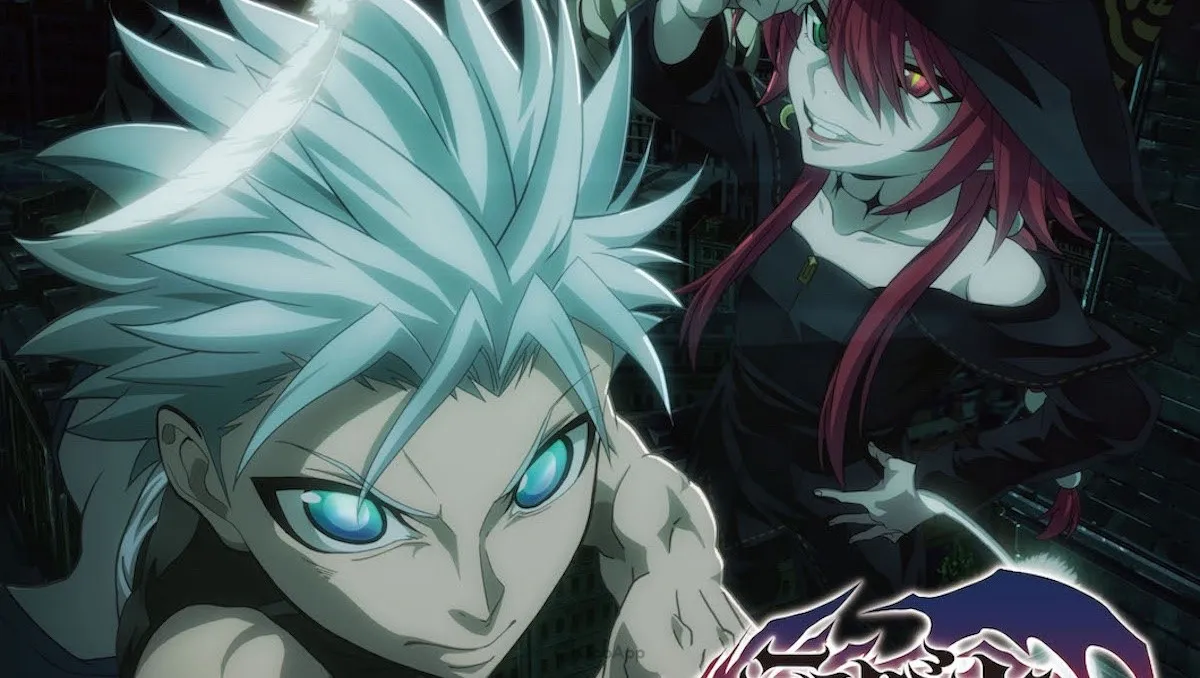
While it may have been somewhat overshadowed by other Fall 2023 and Winter 2024 anime releases, Ragna Crimson proves to be a solid entry in its own right and a definite recommendation for fans of Attack on Titan. This shonen anime paints a vivid picture of a world locked in perpetual conflict with dragons. Initially, the struggle seems balanced, but everything changes when the dragon monarchs escalate their involvement. In a bid to prevent a grim future, Ragna accelerates his growth, determined to confront the dragons head-on. His path intersects with Crimson, a dragon sharing his desire for eradication.
Drawing parallels to Eren from AoT, Ragna is driven by a similar thirst for revenge, though it often blinds him to the risks. Despite his power, he remains vulnerable, frequently finding himself in precarious situations due to his impulsive nature. In contrast, Crimson emerges as a strategic mastermind, preferring cunning over brute force, and stands out as the show’s standout character.
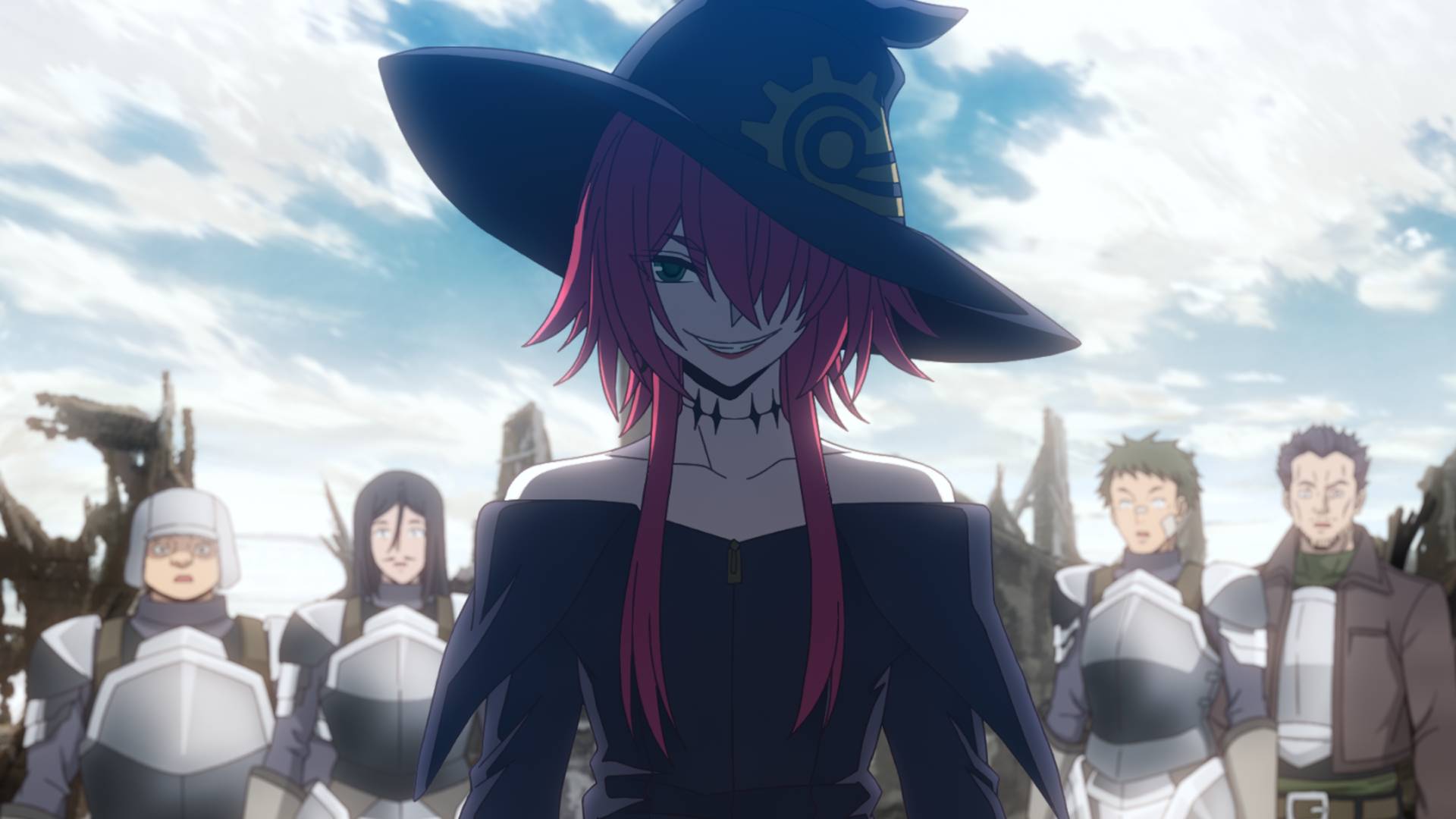
“Ragna Crimson” is a manga series written and illustrated by Daiki Kobayashi. Set in a fantastical world teeming with magic and monsters, the story revolves around a young boy named Ragna, who goes on a quest for revenge against the creatures known as “Necromancers” who slaughtered his family and destroyed his village.
However, his journey takes an unexpected turn when he forms a bond with a dragon named Leonhardt, leading him down a path of self-discovery and conflict.
One of the most striking aspects of “Ragna Crimson” is its stunning artwork. Kobayashi’s detailed illustrations bring the world of the manga to life, from intricate character designs to breathtaking surfaces. The action sequences are particularly impressive, with dynamic panel layouts and fluid choreography that make each battle feel intense and exhilarating.
In addition to its visual prowess, “Ragna Crimson” boasts a rich and immersive world-building. The manga introduces readers to a diverse array of magical beings, each with their own unique powers and abilities. From the towering dragons to the sinister Necromancers, every aspect of the world feels meticulously crafted and thought out.
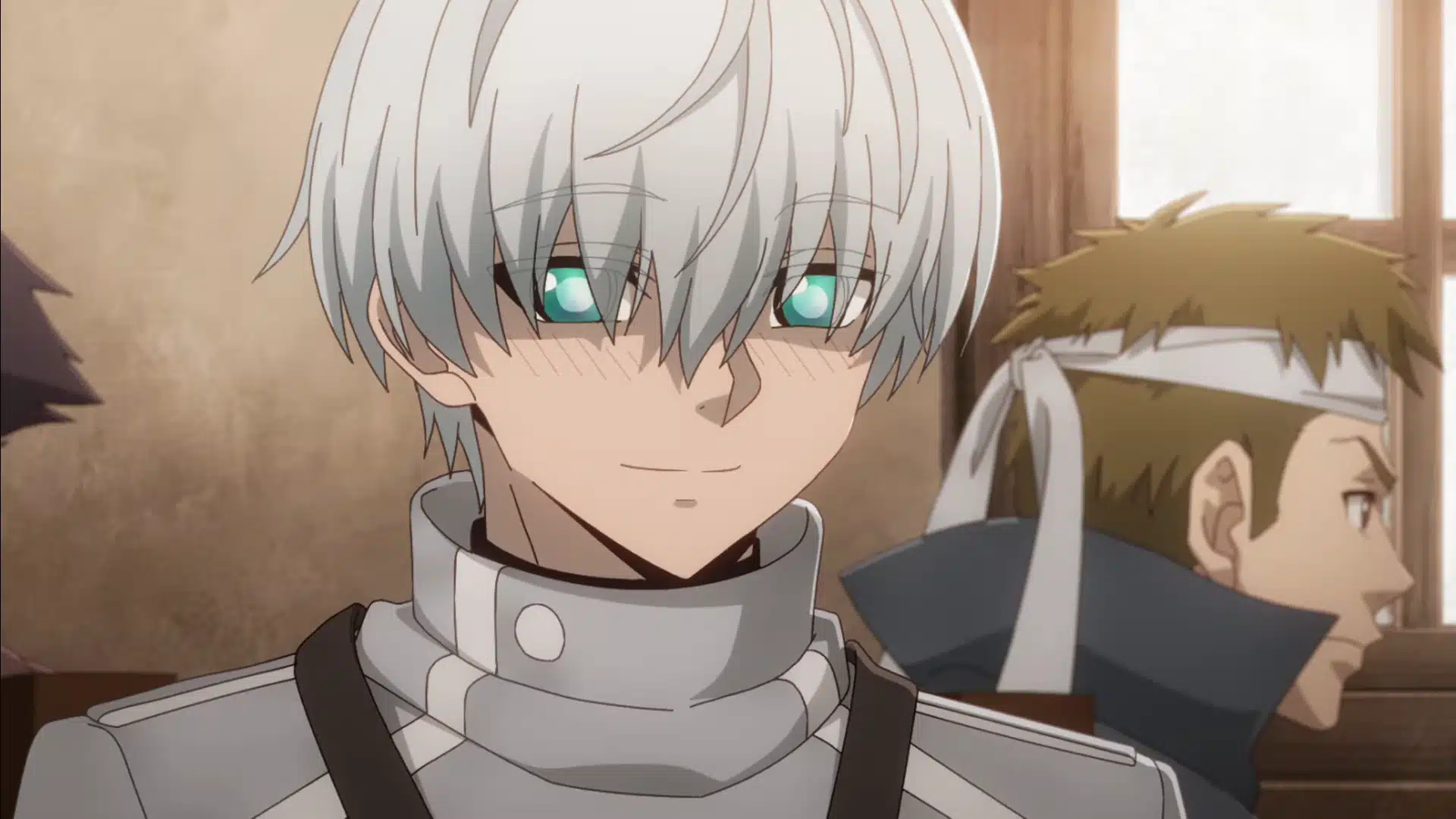
At the heart of the story is Ragna himself, a compelling protagonist driven by a desire for vengeance yet tempered by his growing bond with Leonhardt. As Ragna grapples with his conflicting emotions and struggles to come to terms with his past, readers are drawn into his journey and invested in his quest for justice.
The supporting cast is equally well-developed, with each character bringing their own motivations and conflicts to the narrative. From allies like the enigmatic sorceress, Altria, to adversaries like the ruthless Necromancer, Zephyrus, every character feels integral to the story, adding depth and complexity to the overarching plot.
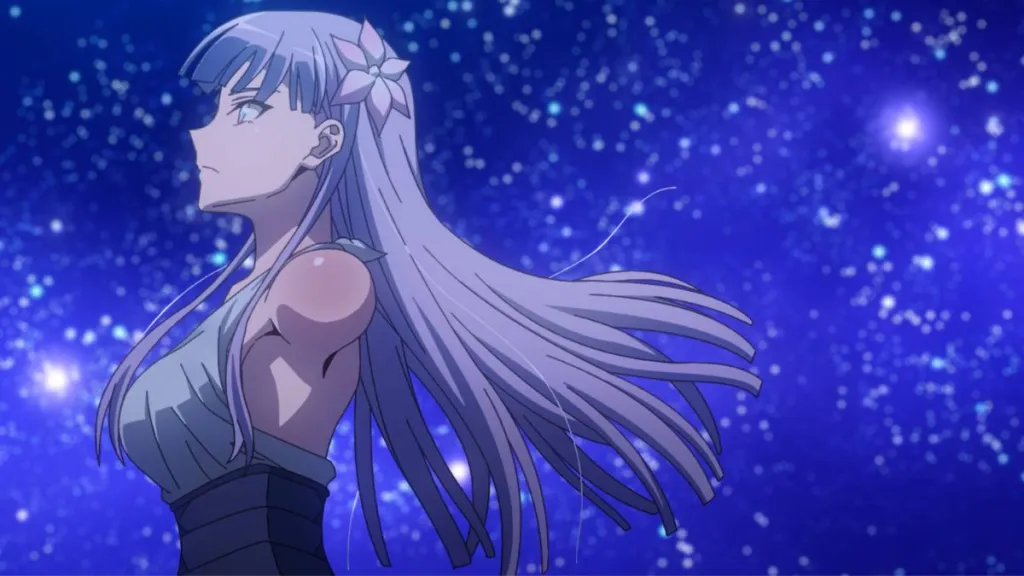
Thematically, “Ragna Crimson” explores concepts of loss, redemption, and the nature of power. Through Ragna’s journey, readers are forced to confront difficult questions about morality and the consequences of one’s actions. The manga doesn’t shy away from depicting the harsh realities of war and violence, but it also offers moments of hope and triumph amidst the darkness.
Ragna Crimson is a nice and visually stunning manga that delivers both thrilling action and heartfelt drama. With its well-developed characters, immersive world-building, and thought-provoking themes, it’s a must-read for fans of fantasy and adventure.
Whether you’re drawn in by the breathtaking artwork or the compelling narrative, “Ragna Crimson” is sure to leave a lasting impression.
8. Black Bullet
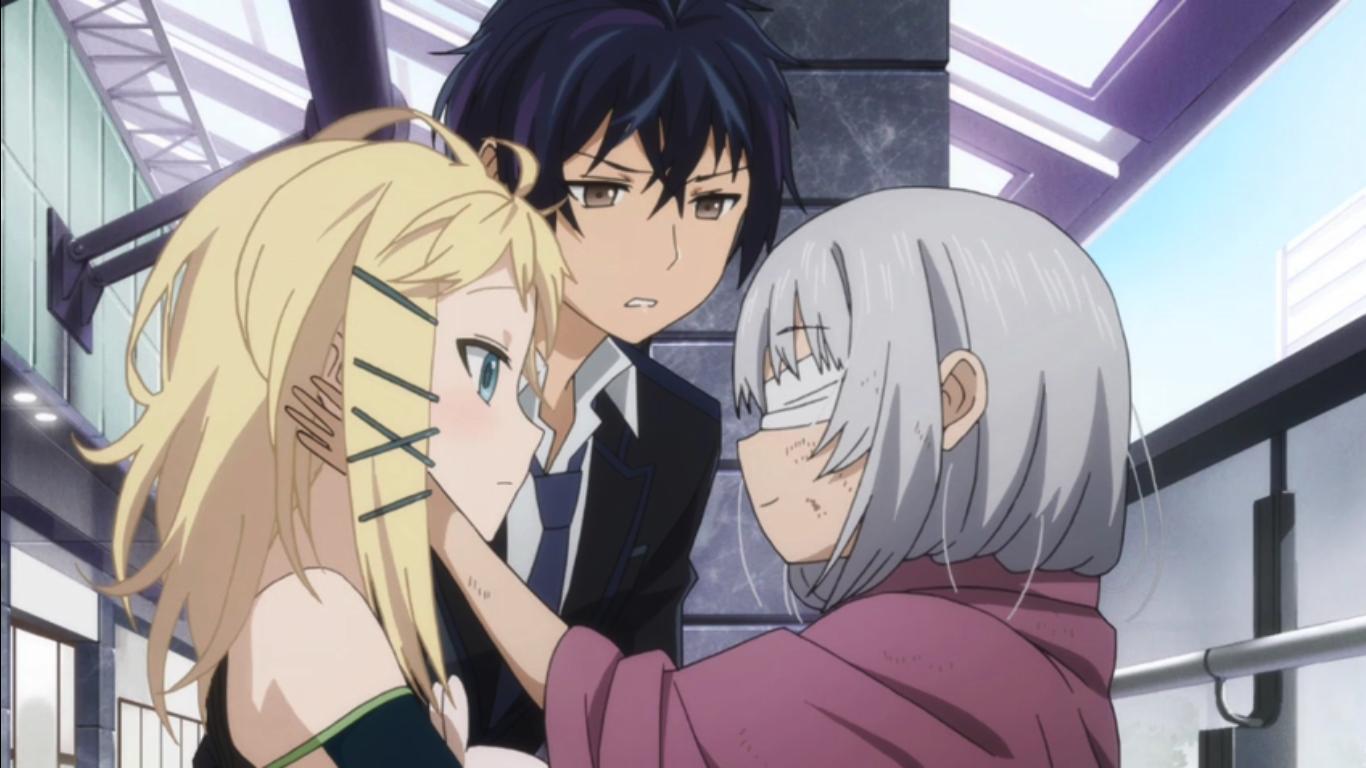
Attack on Titan and Black Bullet indeed share striking similarities, both portraying humanity teetering on the edge of extinction, confined behind protective walls to shield against formidable threats. In Black Bullet, this menace manifests as insidious insects, and the only hope lies with children born with the Gastrea virus.
While Black Bullet’s anime adaptation may not reach the heights of Shiden Kanzaki’s original light novel series, it still delivers enjoyable action, anchored by two charismatic protagonists and an intriguingly crafted world. However, the anime barely looks beneath the surface of the narrative, leaving much of the story unexplored.

“Black Bullet” is a Japanese light novel series written by Shiden Kanzaki and illustrated by Saki Ukai. It was serialized under ASCII Media Works’ Dengeki Bunko imprint from 2011 to 2014. The story is set in a post-apocalyptic world where humanity is threatened by parasitic creatures known as Gastrea, which emerged from a mysterious virus.
To combat this threat, humanity relies on “Cursed Children,” young girls infected with the Gastrea virus who possess superhuman abilities. These girls, known as Initiators, are paired with Promoters, who are tasked with protecting them and utilizing their powers to fight Gastrea.
The narrative primarily follows Rentaro Satomi, a high school student and Promoter, and his Initiator partner Enju Aihara. Rentaro is determined to protect his city, Tokyo, from the Gastrea threat and also seeks to reveal the mysteries surrounding the virus and its origins.
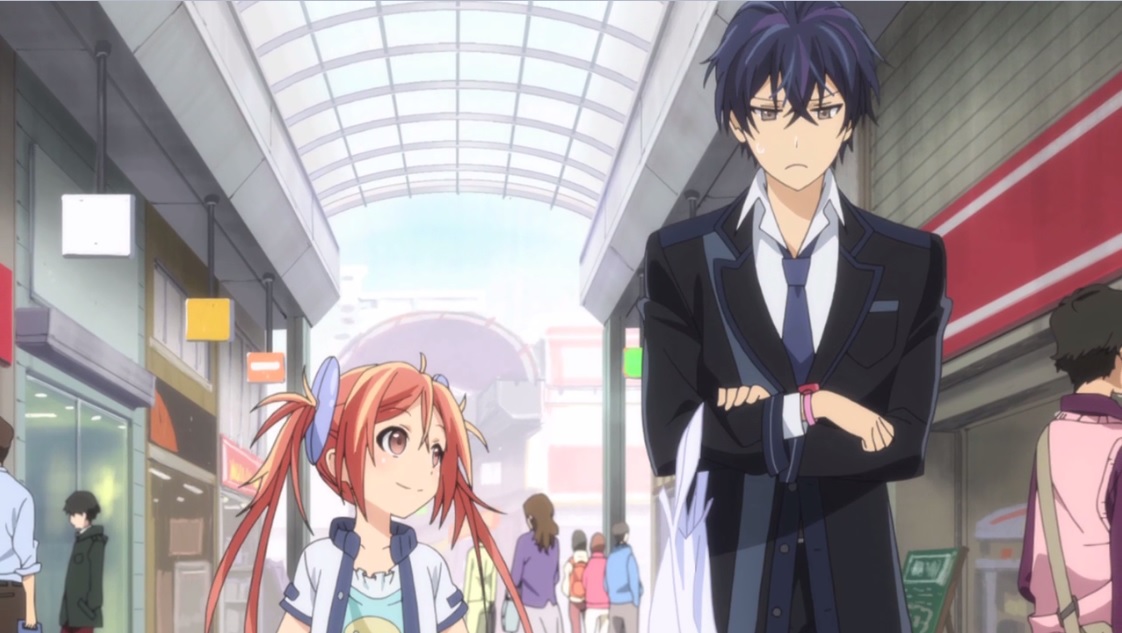
Alongside their comrades in the Civil Security Corporation, Rentaro and Enju face various challenges, including political intrigue, betrayal, and the moral dilemmas surrounding the treatment of Cursed Children.
The light novel series received a manga adaptation illustrated by Morinohon, which was serialized in ASCII Media Works’ Dengeki Maoh magazine from 2012 to 2014.
Additionally, a 13-episode anime adaptation was produced by Kinema Citrus and aired from April to July 2014. The anime closely follows the events of the light novels and manga, albeit with some deviations and alterations to the storyline.
“Black Bullet” is praised for its dark and gritty atmosphere, intricate world-building, and complex characters. It explores themes of discrimination, sacrifice, and the consequences of humanity’s actions. The dynamic between Rentaro and Enju is a central focus of the story, showcasing their unwavering bond amidst the chaos and turmoil of their world.
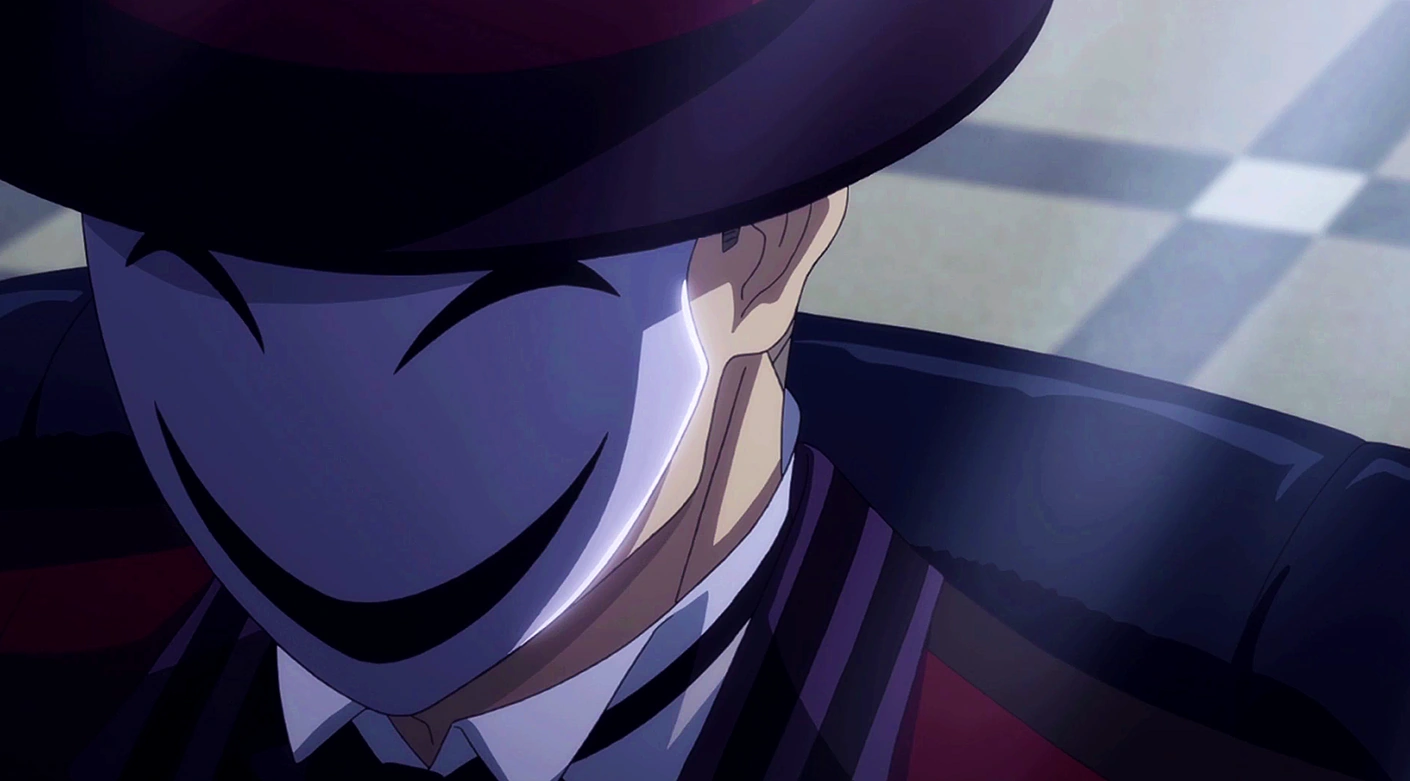
One of the anime’s standout features is its action sequences, which are well-animated and adrenaline-fueled, showcasing intense battles against the Gastrea. The animation effectively captures the sense of danger and urgency that permeates the series, keeping viewers on the edge of their seats.
However, “Black Bullet” is not without its criticisms. Some viewers find fault with its pacing, particularly towards the latter half of the series, where the narrative rushes through certain plot points.
Additionally, while the anime adaptation covers a significant portion of the source material, it leaves some aspects of the story unresolved, leading to a somewhat unsatisfying conclusion for some viewers.
Black Bullet offers an engaging and thought-provoking experience, blending action, drama, and sci-fi elements to create a compelling narrative. Fans of dark fantasy and post-apocalyptic settings are likely to find much to enjoy in this series, despite its occasional flaws.
7. Shiki
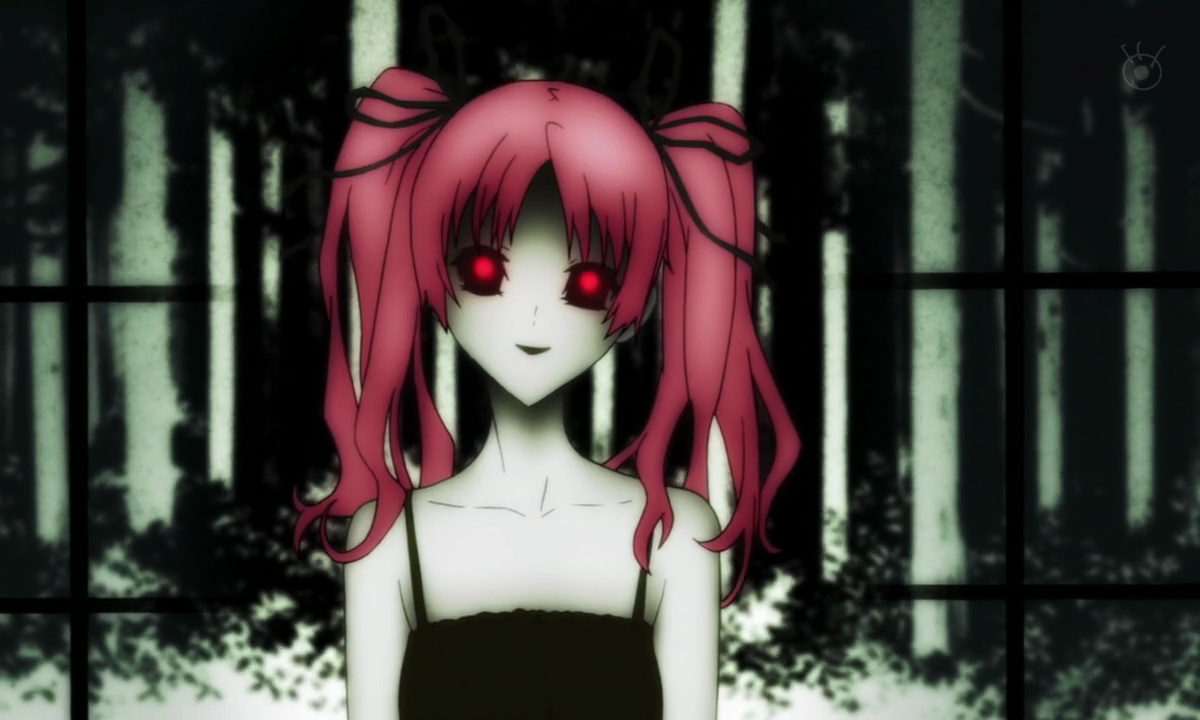
While not strictly a horror series, Attack on Titan occasionally looks into the genre’s motifs, imagery, and tone, offering chilling moments amidst its intense action. While horror anime may be a rare find, there are gems like Shiki that can send shivers down your spine, provided you can overlook some over-the-top character designs.
Shiki stands out as one of the finest horror anime of all time, weaving a tale of eerie mystery and mounting dread in a tranquil rural village. As a string of bizarre deaths grips the community, an unsettling atmosphere of fear takes hold, exacerbated by the residents’ reluctance to confront the truth. To compound their terror, the deaths bear an uncanny resemblance to vampiric attacks.
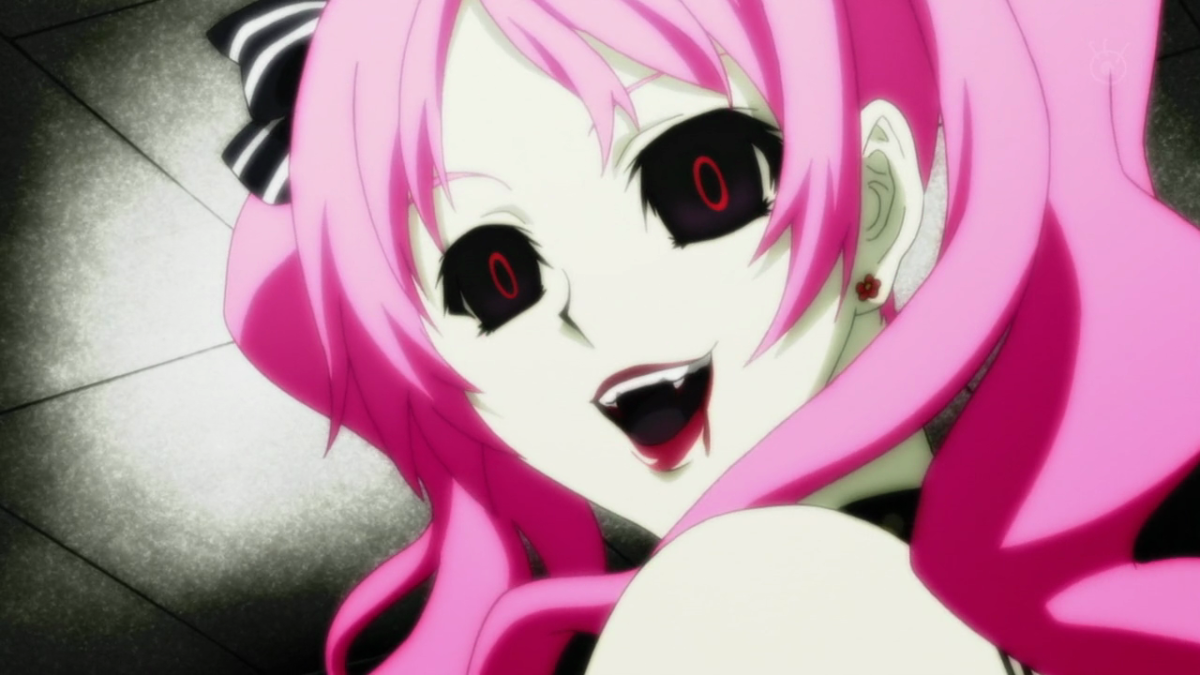
“Shiki” is a compelling Japanese horror manga series written and illustrated by Fuyumi Ono. It was serialized in the literary magazine “The Sneaker” from 1998 to 2002. The story was later adapted into an anime series, which aired from July to December 2010. Set in a remote village named Sotoba, the narrative revolves around a mysterious epidemic that befalls the village, leading to a battle between humans and vampires.
The peaceful village of Sotoba is disturbed by a series of inexplicable deaths. As the villagers grapple with the sudden loss of their loved ones, Dr. Toshio Ozaki, the local physician, begins to suspect that there might be more to these deaths than meets the eye. He collaborates with a monk named Seishin Muroi and the village’s mayor, who also happens to be his childhood friend, to investigate the cause.
Their investigation leads them to uncover the existence of vampires, who are behind the deaths plaguing the village. These vampires, known as “shiki,” are revealed to be former villagers who rose from the dead. As the epidemic spreads, the villagers find themselves in a desperate struggle for survival against the shiki and their insatiable thirst for blood.
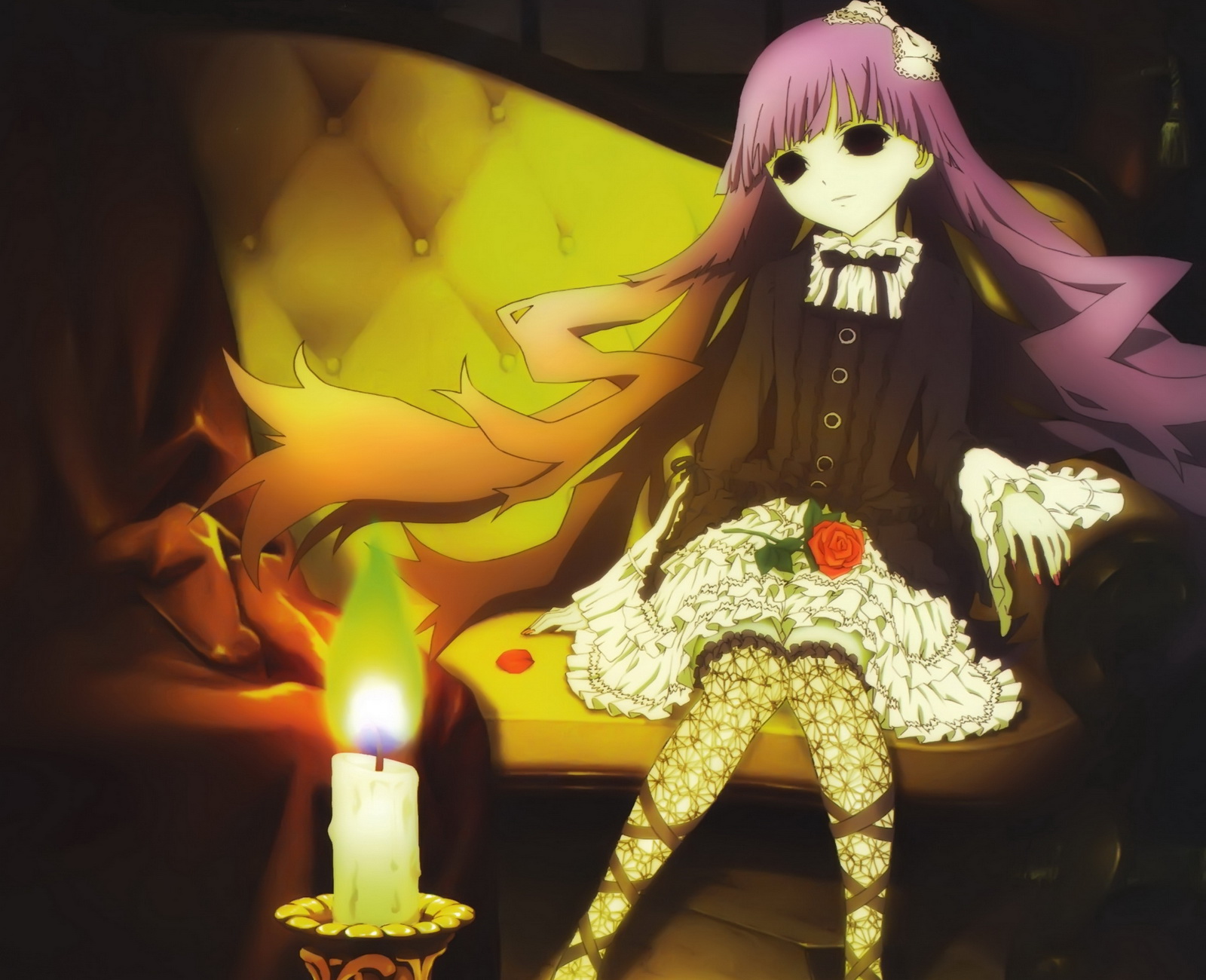
“Shiki” goes into themes of mortality, morality, and the nature of evil. It explores the complex dynamics between the living and the undead, raising questions about the boundaries of humanity and the lengths people are willing to go to in order to survive. The series also examines the consequences of isolation and the power of community in the face of adversity.
The characters in “Shiki” are intricately developed, each with their own motivations and struggles. Dr. Toshio Ozaki emerges as a central figure, torn between his duty as a physician and his desire to protect his loved ones. His unwavering determination to uncover the truth drives much of the narrative forward.
Other notable characters include Natsuno Yuuki, a teenager who becomes embroiled in the conflict with the shiki after the death of his friend; Megumi Shimizu, a young girl whose transformation into a vampire sets off the chain of events in the village; and Sunako Kirishiki, a powerful vampire who serves as the leader of the shiki.

Fuyumi Ono’s artwork in “Shiki” is hauntingly beautiful, perfectly capturing the eerie atmosphere of the story. The character designs are distinct and memorable, with the shiki depicted in a chilling manner that emphasizes their otherworldly nature. The use of shading and lighting adds to the sense of dread and suspense, drawing readers deeper into the unfolding horror.
“Shiki” has received widespread acclaim for its thought-provoking narrative, complex characters, and atmospheric artwork. Critics and fans alike have praised its exploration of existential themes and its ability to evoke a sense of dread and unease. The anime adaptation was also well-received, with particular praise for its faithfulness to the source material and its atmospheric soundtrack.
Shiki stands as a standout example of horror storytelling in both manga and anime, offering a chilling and thought-provoking experience that lingers in the mind long after the final page is turned or the last episode watched.
6. Code Geass
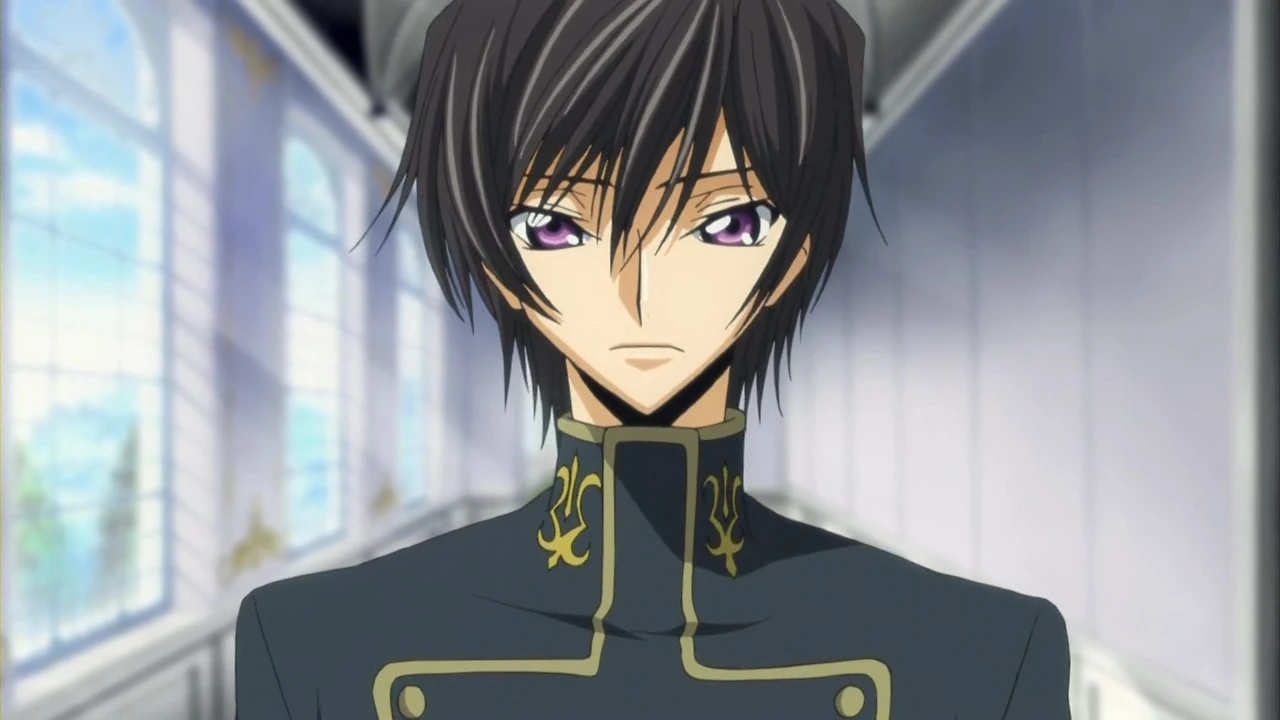
Code Geass, a mecha masterpiece from Sunrise, has earned its status as a classic despite its occasional plot holes and contrivances, particularly evident in its second season. Nevertheless, the anime remains a compelling watch, buoyed by its formidable protagonist, dynamic fight sequences, and intricate political machinations.
Set in a world where Japan is under the oppressive rule of the Holy Britannian Empire, a resistance movement struggles to gain traction until the arrival of a enigmatic leader known as Zero. Promising liberation and revolution, Zero’s charisma galvanizes the rebellion, sparking hope for change.
However, Zero’s true identity is revealed to be Lelouch, a Britannian prince endowed with the power to compel obedience with a single command. Despite his noble facade, Lelouch is motivated primarily by a thirst for revenge rather than altruism. Renowned for his strategic brilliance and penchant for manipulation, Lelouch’s machinations draw parallels to later-day Eren from Attack on Titan.

“Code Geass” is a nice anime series that seamlessly blends political intrigue, complex characters, and intense mecha battles into a thrilling narrative. Created by Sunrise Studio and directed by Gorō Taniguchi, “Code Geass” first aired in Japan in 2006 and quickly gained a cult following worldwide for its thought-provoking storyline and dynamic characters.
Set in an alternate future where the Holy Britannian Empire dominates much of the world, the story follows the protagonist, Lelouch Lamperouge, a seemingly ordinary high school student living in occupied Japan, which is now called Area 11. However, Lelouch is far from ordinary.
He is the exiled prince of Britannia seeking vengeance for the murder of his mother and the crippling of his sister, Nunally. His quest for justice takes an unexpected turn when he encounters a mysterious girl named C.C., who grants him the power of Geass—a supernatural ability that allows him to command others to obey his every order.
With his newfound power, Lelouch assumes the alter ego of “Zero” and spearheads the resistance movement known as the Black Knights, aiming to overthrow Britannia and create a world where his sister can live in peace.
As the series progresses, Lelouch’s tactics become increasingly ruthless and morally ambiguous, blurring the lines between hero and villain. Along the way, he must navigate complex political alliances, face off against formidable adversaries, and confront his own inner demons.

“Code Geass” goes into a myriad of themes, including power, corruption, rebellion, and the consequences of one’s choices. It explores the moral ambiguity of warfare and the ethical dilemmas faced by its characters.
The series also goes into the nature of leadership, sacrifice, and the pursuit of justice in a world rife with inequality and oppression. Moreover, the dynamics of friendship, betrayal, and loyalty are central to the narrative, as characters grapple with conflicting loyalties and shifting alliances.
The strength of “Code Geass” lies in its richly developed characters, each with its own motivations, flaws, and moral complexities. Lelouch Lamperouge, the enigmatic anti-hero, undergoes a compelling character arc as he grapples with the weight of his actions and the consequences of his quest for vengeance.
His rival, Suzaku Kururugi, provides a stark contrast as a fiercely idealistic soldier determined to change Britannia from within, even as he struggles with his own demons.
Supporting characters such as C.C., Kallen Stadtfeld, and Jeremiah Gottwald add depth and nuance to the story, each with their own agendas and allegiances. The intricate web of relationships and rivalries keeps viewers on the edge of their seats, as alliances shift and betrayals abound.
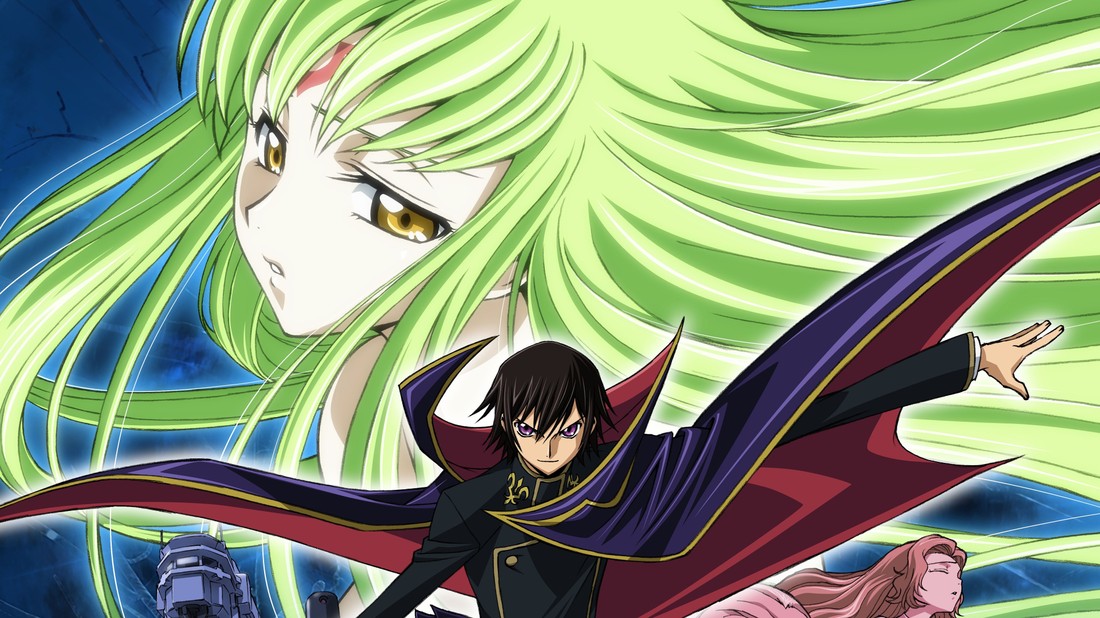
Visually stunning and meticulously animated, “Code Geass” features dynamic action sequences, breathtaking mecha battles, and intricately detailed character designs. The animation brings the futuristic world of Britannia to life, from its towering skyscrapers to its sprawling battlefields.
Complementing the visuals is a powerful soundtrack composed by Kotaro Nakagawa and Hitomi Kuroishi, featuring epic orchestral scores, haunting melodies, and adrenaline-pumping tracks that enhance the emotional impact of each scene. From the iconic opening theme “Colors” by FLOW to the hauntingly beautiful “Continued Story,” the music of “Code Geass” adds another layer of depth to the series.
Since its release, “Code Geass” has left an indelible mark on the anime, inspiring numerous spin-offs, manga adaptations, and even a series of movies recapping the original story. Its thought-provoking themes, complex characters, and gripping narrative continue to resonate with audiences worldwide, cementing its status as a modern classic of the genre.
Code Geass is a masterfully crafted anime series that deftly combines political intrigue, mecha action, and compelling character drama into a gripping saga of rebellion and redemption. With its thought-provoking themes, morally complex characters, and stunning animation, it remains a must-watch for anime enthusiasts and newcomers alike.
5. Saga of Tanya the Evil

Before the release of Attack on Titan: The Final Season, Saga of Tanya the Evil might not have been an obvious choice for fans of shonen anime, highlighting the significant impact of the former on the genre. Nowadays, however, the isekai series feels almost like a kindred spirit to AoT, sharing themes of warfare, a visual aesthetic reminiscent of the World Wars, and protagonists willing to tread morally ambiguous paths to achieve their objectives.
While Saga of Tanya the Evil lacks the moral ambiguity that characterizes AoT, viewers are unmistakably meant to align with its eponymous protagonist, Tanya. However, the anime refrains from portraying Tanya’s actions as wholly righteous. In fact, Tanya is depicted as far more self-serving and morally reprehensible than Eren, earning her the moniker of evil in the title.

“Saga of Tanya the Evil,” also known as “Youjo Senki” in Japanese, is a unique and compelling anime series that blends elements of military warfare, fantasy, and psychological thriller. Adapted from the light novel series written by Carlo Zen and illustrated by Shinobu Shinotsuki, the anime first aired in 2017 and quickly garnered a dedicated fanbase for its thought-provoking premise and complex protagonist.
The story is set in an alternate world that closely resembles Europe during World War I, but with a twist of magic and supernatural elements. The protagonist, Tanya Degurechaff, is a young girl who is reincarnated into this world as a soldier after angering a mysterious being who claims to be God.
Determined to rise through the ranks and attain a comfortable life away from the frontlines, Tanya joins the military and quickly distinguishes herself as a brilliant strategist and ruthless combatant.
As Tanya climbs the ranks of the Imperial Army, she finds herself embroiled in a brutal war against neighboring countries, utilizing both conventional military tactics and her own magical abilities to secure victory for her nation. However, her ambitions attract the attention of higher powers, including the mysterious Being X, who continues to test her faith and resilience through a series of increasingly dangerous challenges.
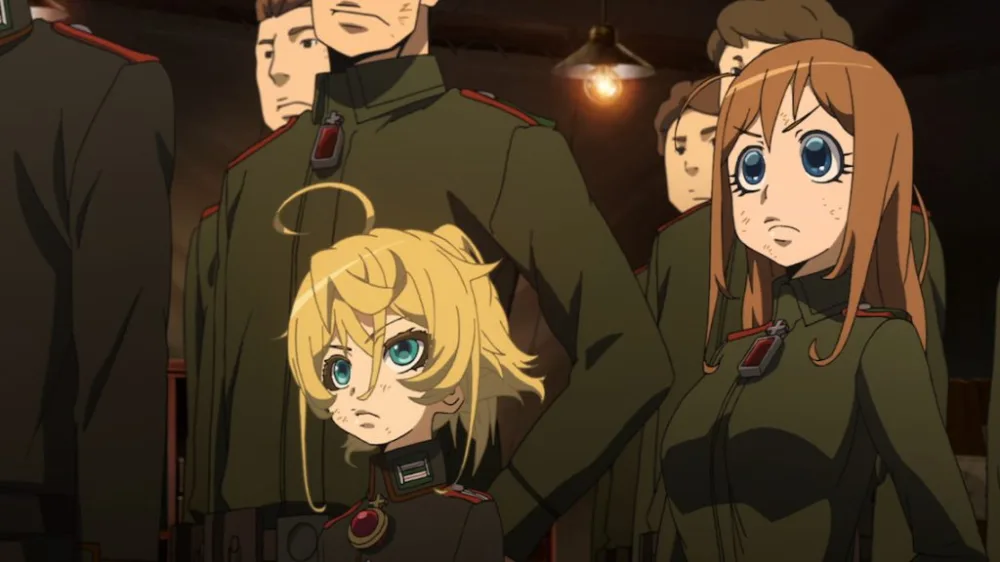
At its core, “Saga of Tanya the Evil” explores themes of ambition, survival, and the consequences of one’s actions. Tanya’s relentless pursuit of power and self-preservation drives much of the narrative, as she navigates the morally gray world of wartime politics and intrigue. The series also goes into the nature of faith and destiny, as Tanya grapples with her belief in a higher power and the role it plays in her life.
Additionally, “Saga of Tanya the Evil” raises questions about the ethics of warfare and the human cost of conflict, as Tanya and her comrades are forced to confront the harsh realities of battle and the sacrifices required for victory. The juxtaposition of magic and technology adds an extra layer of complexity to the narrative, highlighting the clash between traditional values and modern warfare.
Central to the series is Tanya Degurechaff, a fascinating and morally ambiguous protagonist whose intelligence and ruthlessness make her both compelling and unsettling.
Tanya’s complex personality and inner struggles drive much of the story, as she grapples with the consequences of her actions and her ongoing battle with Being X. Despite her cold and calculating demeanor, Tanya is not without moments of vulnerability, allowing viewers to glimpse the humanity beneath her steely exterior.
Supporting characters such as Colonel Erich von Rerugen, Lieutenant Serebryakov, and Major Degurechaff (Tanya’s father) provide depth and nuance to the narrative, each with its own motivations and agendas. The dynamic between Tanya and her comrades, as well as her adversaries, adds tension and intrigue to the story, as alliances shift and loyalties are tested.
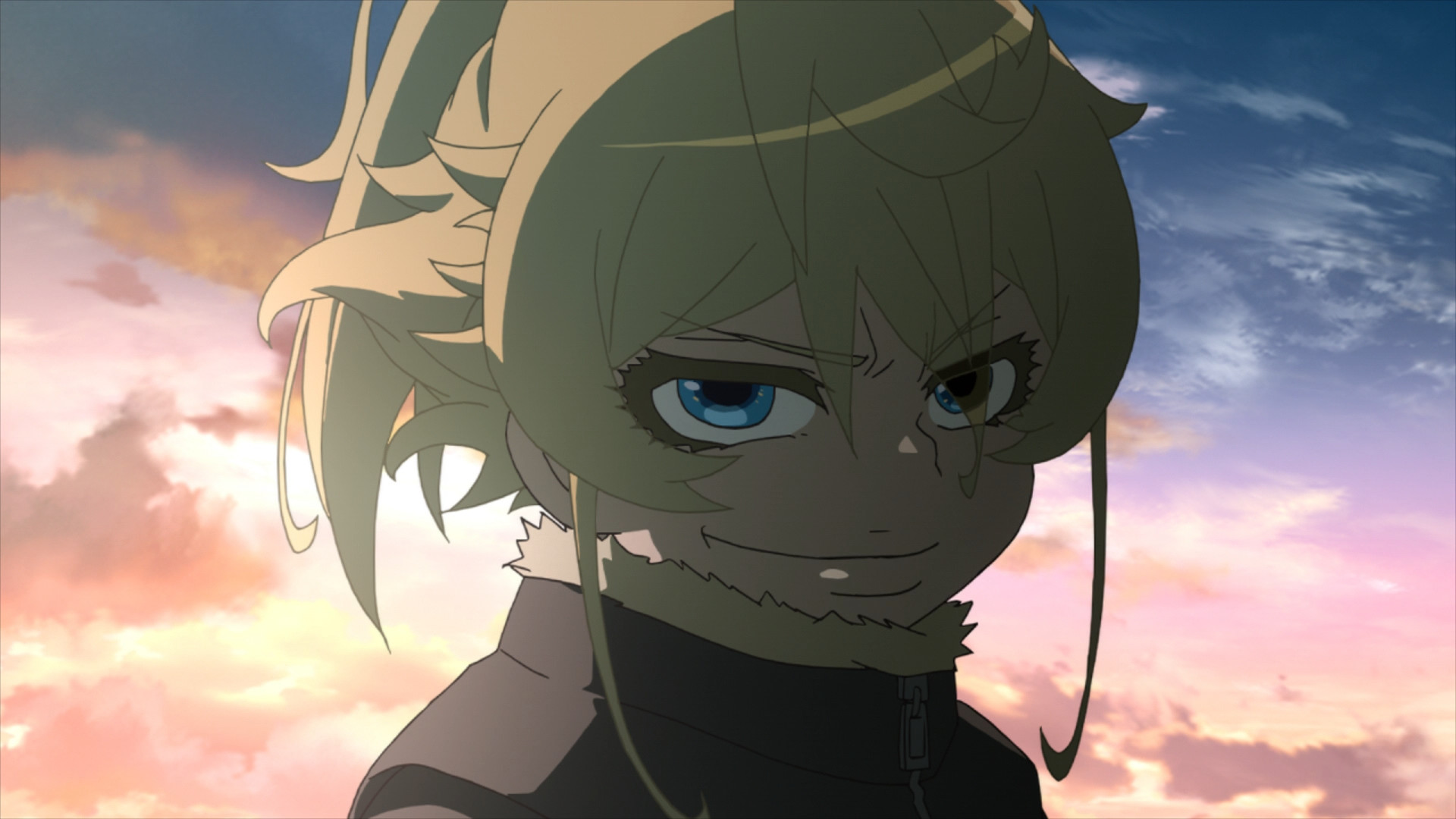
Visually striking and impeccably animated, “Saga of Tanya the Evil” features fluid action sequences, detailed character designs, and stunning magical effects. The animation brings the gritty world of wartime Europe to life, from the trenches of the battlefield to the corridors of power in the Imperial Capital.
Complementing the visuals is a haunting soundtrack composed by Shūji Katayama, featuring epic orchestral scores, melancholic melodies, and atmospheric soundscapes that enhance the mood and atmosphere of the series. From the somber strains of “Sensen no Realism” to the adrenaline-pumping “Jingo Jungle,” the music of “Saga of Tanya the Evil” adds depth and emotion to the story.
Since its release, “Saga of Tanya the Evil” has garnered praise for its gripping storyline, complex characters, and thought-provoking themes. The series has inspired a loyal fanbase and received critical acclaim for its unique blend of military drama, fantasy elements, and psychological intrigue.
Saga of Tanya the Evil is a nice anime series that defies expectations with its compelling premise, morally ambiguous protagonist, and intense action sequences. With its thought-provoking themes, well-developed characters, and stunning animation, it remains a must-watch for anime enthusiasts seeking a fresh take on the isekai genre.
4. Gurren Lagann

Gurren Lagann thrusts viewers into a world where humanity is forced underground by Beastmen who dominate the surface, wielding both their animal-like appearance and powerful mechs.
While the initial setup may draw comparisons to other anime like Attack on Titan, Gurren Lagann injects a twist towards the end of its first arc that sets it apart. As the citizens below rebel and strive to reclaim the surface, the series reveals the hidden depths of the Beastmen, altering the narrative trajectory and tone.
Intriguingly, the series secures its place among the best on Crunchyroll with its unique blend of action, drama, and unexpected revelations.

“Gurren Lagann” is an exhilarating mecha anime series that bursts with creativity, action-packed sequences, and profound themes of courage, determination, and the power of the human spirit. Produced by Gainax and directed by Hiroyuki Imaishi, the series originally aired in 2007 and quickly became a beloved classic within the anime community for its bold storytelling and dynamic characters.
Set in a distant future where humanity is forced to live underground to escape the tyranny of the Beastmen and their leader, the Spiral King Lordgenome, “Gurren Lagann” follows the journey of Simon and Kamina, two unlikely heroes determined to break free from the confines of their subterranean village and reach the surface.
Their quest for freedom leads them to discover a mysterious mecha called Lagann and a fierce warrior named Yoko Littner, setting them on a journey that will shake the very foundations of their world.
As Simon, Kamina and their allies form the Dai-Gurren Brigade, they go on a daring mission to defeat the Spiral King and reclaim the surface world. Along the way, they encounter formidable enemies, forge powerful alliances, and uncover the truth behind the secrets of their universe. Through courage, teamwork, and unwavering resolve, they defy impossible odds and ignite a revolution that will change the course of history.
At its core, “Gurren Lagann” is a celebration of the human spirit and the indomitable will to defy fate and reach for the stars. The series explores themes of perseverance, self-belief, and the triumph of hope over despair, as the characters overcome seemingly insurmountable obstacles through sheer determination and grit.
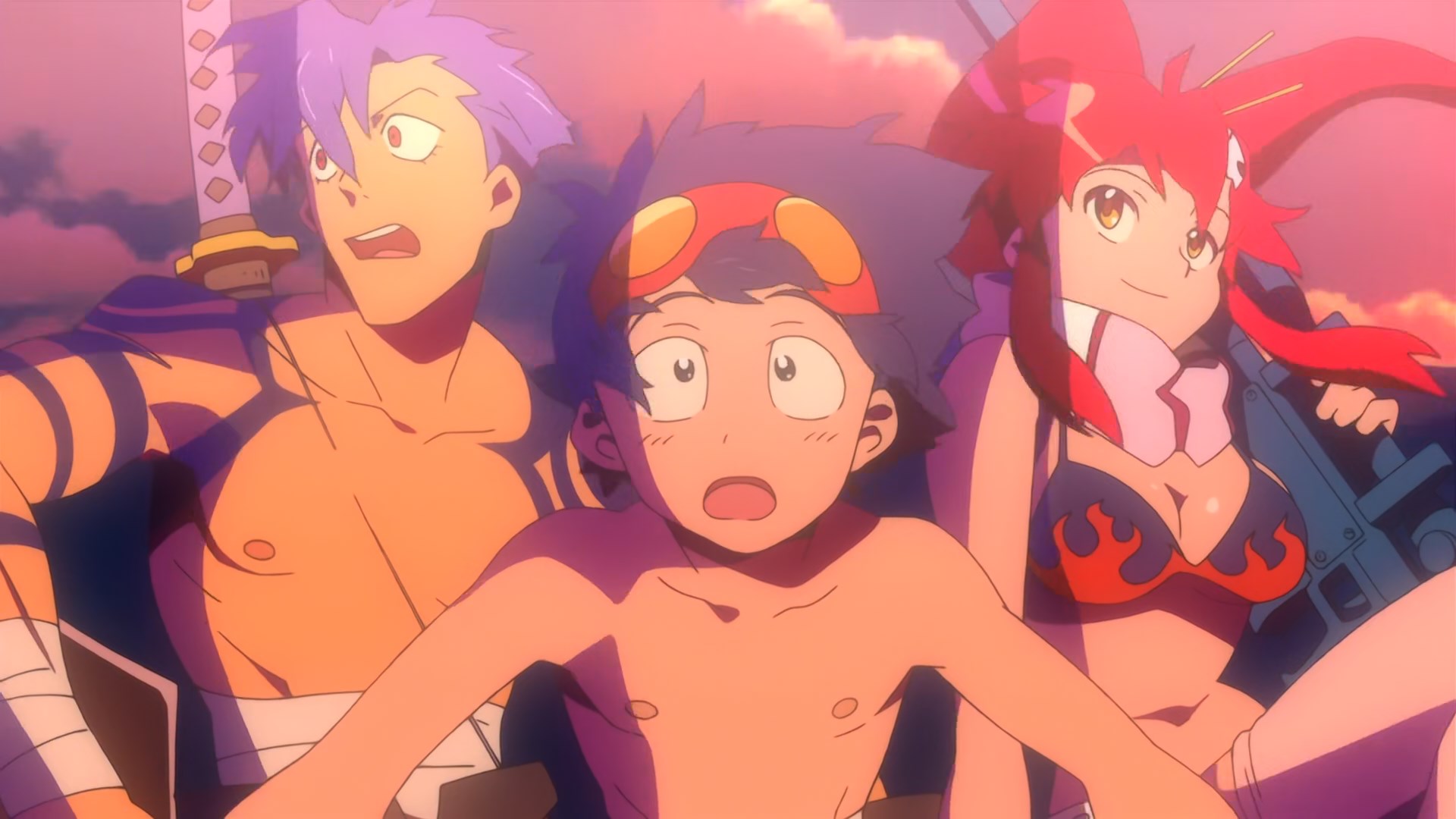
Through Simon and Kamina’s journey from humble beginnings to legendary heroes, “Gurren Lagann” inspires viewers to embrace their inner strength and never give up, no matter the odds.
Moreover, the series goes into the concept of evolution and the cyclical nature of history, as humanity struggles to break free from the shackles of fate and forge its own destiny. The Spiral King’s iron-fisted rule and the Dai-Gurren Brigade’s rebellion serve as allegories for the eternal struggle between oppression and liberation, reminding viewers of the importance of fighting for freedom and justice.
One of the greatest strengths of “Gurren Lagann” lies in its colorful and dynamic cast of characters, each with their own quirks, motivations, and growth arcs. Simon, the shy and timid digger who discovers his inner strength through Kamina’s unwavering belief in him, undergoes a remarkable transformation from an uncertain boy to a fearless leader capable of wielding the power of the Spiral.
Kamina, the charismatic and larger-than-life warrior with a boundless spirit and unbreakable resolve, serves as Simon’s mentor and inspiration, driving him to reach greater heights and defy impossible odds. Yoko Littner, the fiery and determined sniper with a tragic past, adds depth and complexity to the narrative, serving as both a love interest for Kamina and a formidable warrior in her own right.
Supporting characters such as Viral, Nia Teppelin, and the members of the Dai-Gurren Brigade each play crucial roles in the story, contributing their unique skills and personalities to the team’s efforts to overthrow the Spiral King and create a brighter future for humanity.

Visually stunning and brimming with kinetic energy, “Gurren Lagann” features fluid animation, dynamic action sequences, and larger-than-life mecha battles that showcase the creativity and talent of the animators at Gainax. From the awe-inspiring scale of the mecha to the intricate character designs and vibrant color palette, the animation brings the fantastical world of “Gurren Lagann” to life in breathtaking detail.
Complementing the visuals is a powerful soundtrack composed by Taku Iwasaki, featuring epic orchestral scores, adrenaline-pumping rock anthems, and emotional ballads that heighten the drama and intensity of each scene.
From the iconic opening theme “Sorairo Days” by Shoko Nakagawa to the climactic “Libera me from hell,” the music of “Gurren Lagann” enhances the emotional impact of the series and leaves a lasting impression on viewers.
Since its release, “Gurren Lagann” has left an indelible mark on the anime, inspiring a devoted fanbase and earning widespread acclaim for its bold storytelling, dynamic characters, and stunning animation. The series has spawned a variety of spin-offs, manga adaptations, and merchandise, cementing its status as a modern classic of the mecha genre.
Gurren Lagann is a thrilling and uplifting anime series that celebrates the power of the human spirit and the courage to defy fate. With its epic battles, memorable characters, and profound themes of hope and perseverance, it continues to grab audiences around the world and remains a timeless testament to the boundless potential of the human imagination.
3. Fullmetal Alchemist: Brotherhood
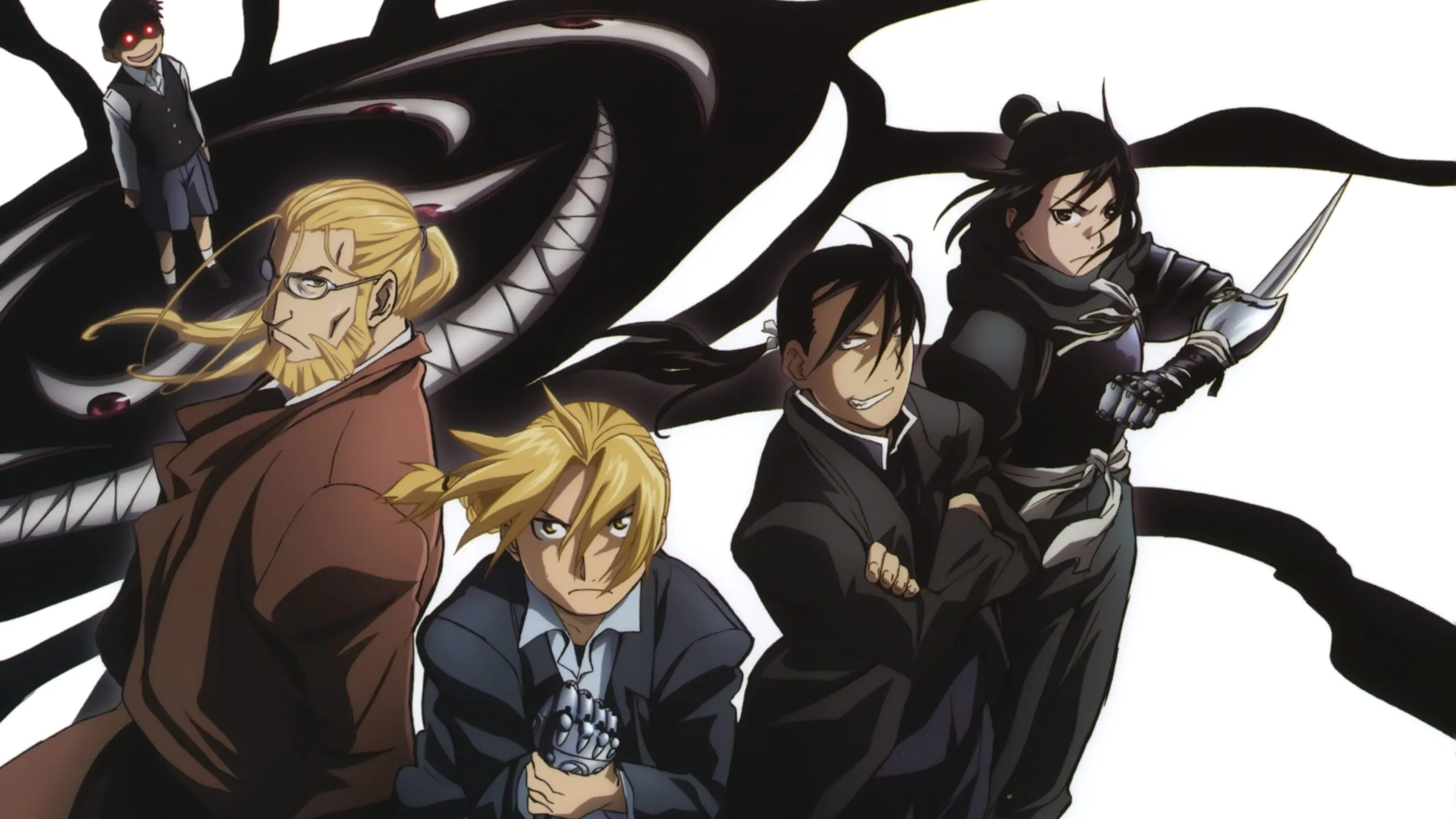
Fullmetal Alchemist: Brotherhood stands as an all-time modern classic, earning its place alongside Attack on Titan as a quintessential gateway anime. In fact, it’s often considered to have surpassed older series like Dragon Ball Z, Sailor Moon, and Cowboy Bebop in terms of cultural impact and acclaim. The sheer quality of Fullmetal Alchemist: Brotherhood makes it an automatic recommendation for anime fans of all stripes.
Beyond their shared mainstream appeal, FMA:B and AoT look into similar thematic territories, including human experimentation, obsession, and grief. Both series also navigate intricate political views and tackle philosophical questions, albeit not always as their primary focus.

“Fullmetal Alchemist: Brotherhood” stands as a pinnacle of anime storytelling, revered for its intricate plot, complex characters, and exploration of profound themes. Adapted from the manga written by Hiromu Arakawa, the series was produced by Bones Studio and directed by Yasuhiro Irie.
Originally airing in 2009, “Fullmetal Alchemist: Brotherhood” quickly gained acclaim and became a cornerstone of the anime community, beloved by fans for its depth, emotion, and stunning animation.
Set in a world where alchemy is a powerful force governed by the principle of Equivalent Exchange—wherein something of equal value must be sacrificed to obtain something desired—the story follows two brothers, Edward and Alphonse Elric.
After a failed attempt to resurrect their deceased mother using alchemy, Edward loses his left leg and Alphonse loses his entire body. In a desperate bid to restore what they’ve lost, Edward sacrifices his right arm to bind Alphonse’s soul to a suit of armor.
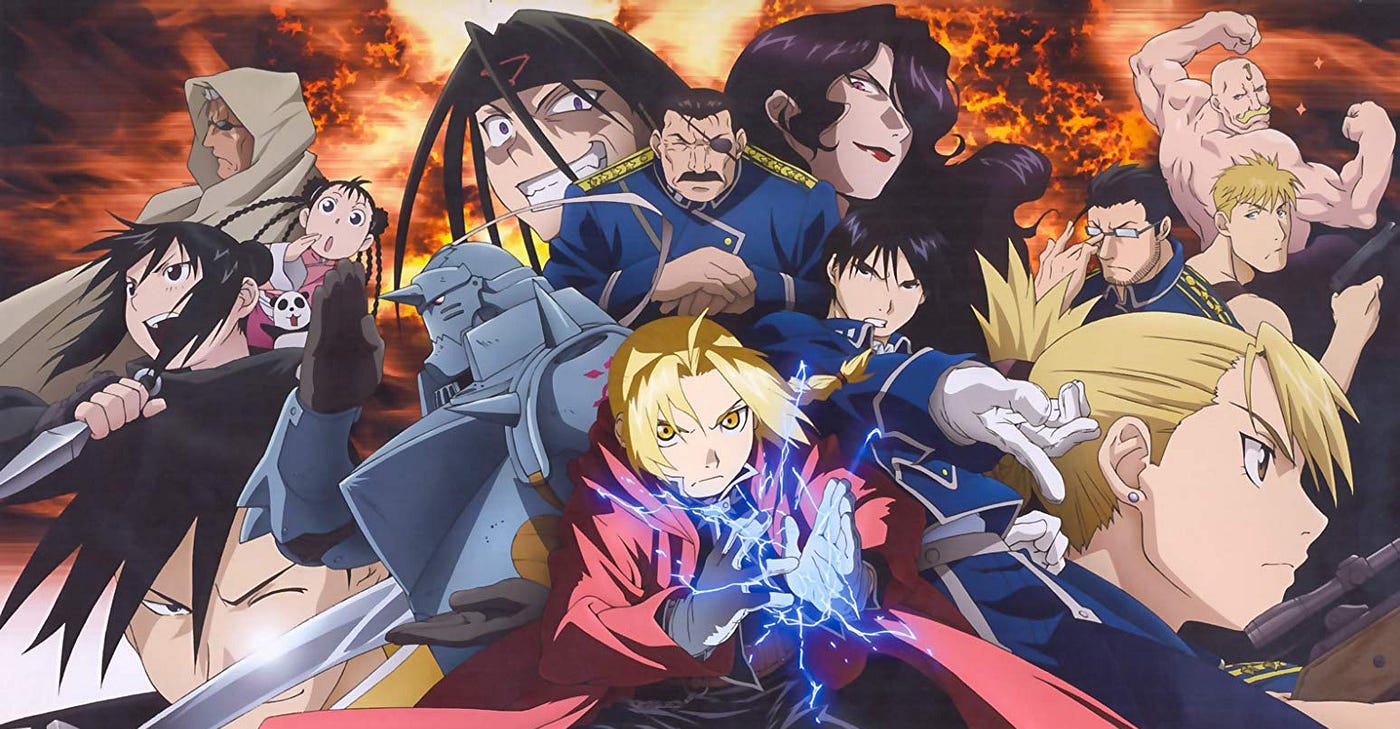
Determined to regain their original bodies, the Elric brothers go on a quest to find the Philosopher’s Stone, a legendary artifact said to bypass the laws of Equivalent Exchange. Their journey leads them to uncover a vast conspiracy involving the military, alchemical research, and the dark secrets of their world’s history.
At its core, “Fullmetal Alchemist: Brotherhood” explores profound themes such as the nature of sacrifice, the consequences of ambition, and the search for redemption. Through the trials and tribulations faced by the Elric brothers and their allies, the series goes into the ethical implications of wielding power, the complexities of human nature, and the bonds of brotherhood.
The narrative also grapples with themes of war, morality, and the pursuit of truth, as characters navigate the moral ambiguity of their actions and confront the injustices of society. Whether it’s the military’s exploitation of alchemy for warfare or the manipulation of truth for political gain, “Fullmetal Alchemist: Brotherhood” serves as a powerful allegory for the human condition and the struggle to find meaning in a chaotic world.
Central to the series is the dynamic relationship between Edward and Alphonse Elric, whose unwavering bond serves as the emotional anchor of the narrative. Edward, the hot-headed and determined prodigy known as the Fullmetal Alchemist, is driven by a deep sense of guilt and responsibility for his brother’s condition.
Alphonse, the gentle giant trapped in an empty suit of armor, grapples with questions of identity and existence as he accompanies his brother on their journey.
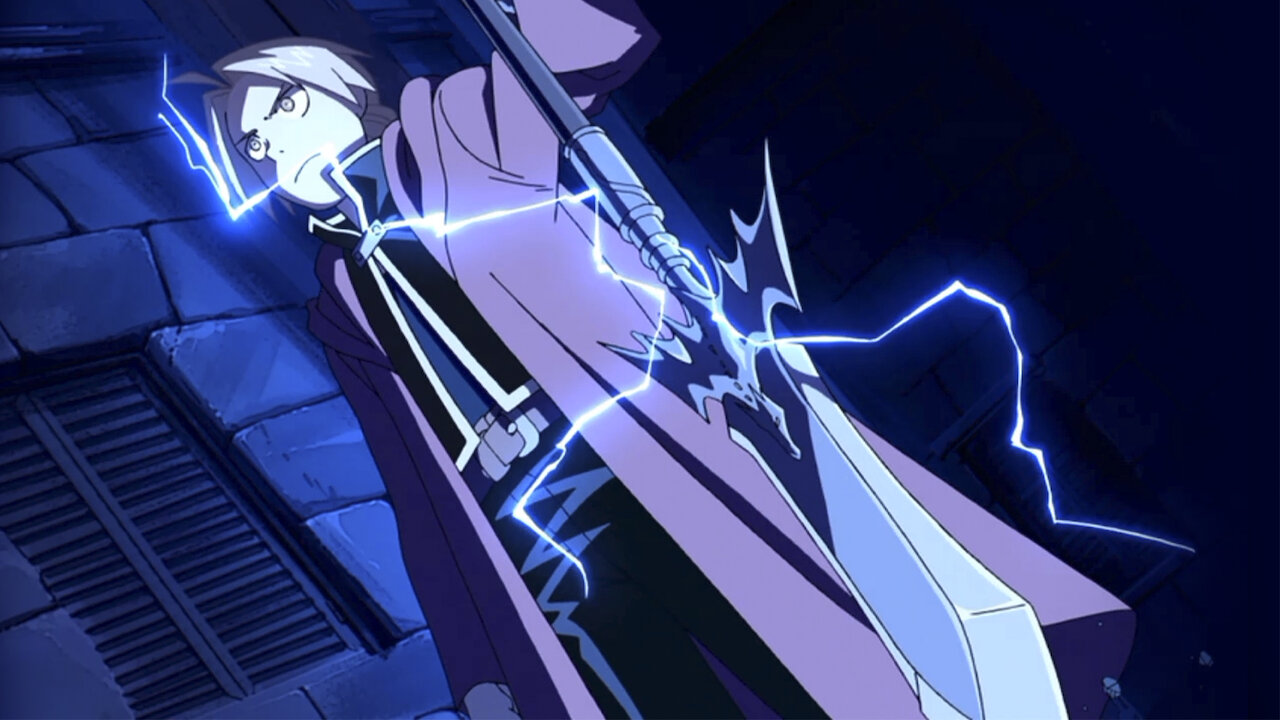
Supporting characters such as Roy Mustang, Winry Rockbell, and Colonel Maes Hughes add depth and nuance to the story, each with their own struggles, motivations, and growth arcs. The series also features memorable antagonists like the Homunculi, embodiments of the Seven Deadly Sins, who serve as formidable adversaries for the Elric brothers and their allies.
Visually stunning and meticulously animated, “Fullmetal Alchemist: Brotherhood” features fluid action sequences, detailed character designs, and breathtaking alchemical effects that bring the world of Amestris to life with vibrant detail. From the bustling streets of Central City to the sprawling battlefields of Ishval, the animation captures the epic scope and scale of the story with breathtaking precision.
Complementing the visuals is a powerful soundtrack composed by Akira Senju, featuring orchestral scores, haunting melodies, and stirring vocal tracks that enhance the emotional impact of each scene. From the haunting “Lapis Philosophorum” to the triumphant “Again,” the music of “Fullmetal Alchemist: Brotherhood” immerses viewers in its world and adds depth to its characters and themes.
Since its release, “Fullmetal Alchemist: Brotherhood” has left an indelible mark on the anime, earning widespread acclaim from critics and audiences alike. Its compelling storytelling, complex characters, and stunning animation have cemented its status as one of the greatest anime series of all time, beloved by fans around the world.
Fullmetal Alchemist: Brotherhood is a masterful anime series that transcends genre conventions to deliver a timeless tale of sacrifice, redemption, and the power of the human spirit. With its richly drawn characters, thought-provoking themes, and breathtaking animation, it continues to grab audiences and inspire a new generation of anime enthusiasts.
2. Neon Genesis Evangelion

Neon Genesis Evangelion stands tall as one of the most revered anime of all time, leaving an indelible mark on the medium despite its single-season run. Its legacy lives on through manga adaptations, video games, and a series of reboot movies, with the latest installments available for streaming on Amazon Prime, while the original series resides on Netflix.
Set in a future where Earth is under constant assault by otherworldly beings known as angels, the fate of humanity rests in the hands of angsty teenagers piloting giant mechs known as EVA units. Echoing themes found in Attack on Titan, such as the use of child soldiers, both series look deep into the psyche of their protagonists and antagonists.
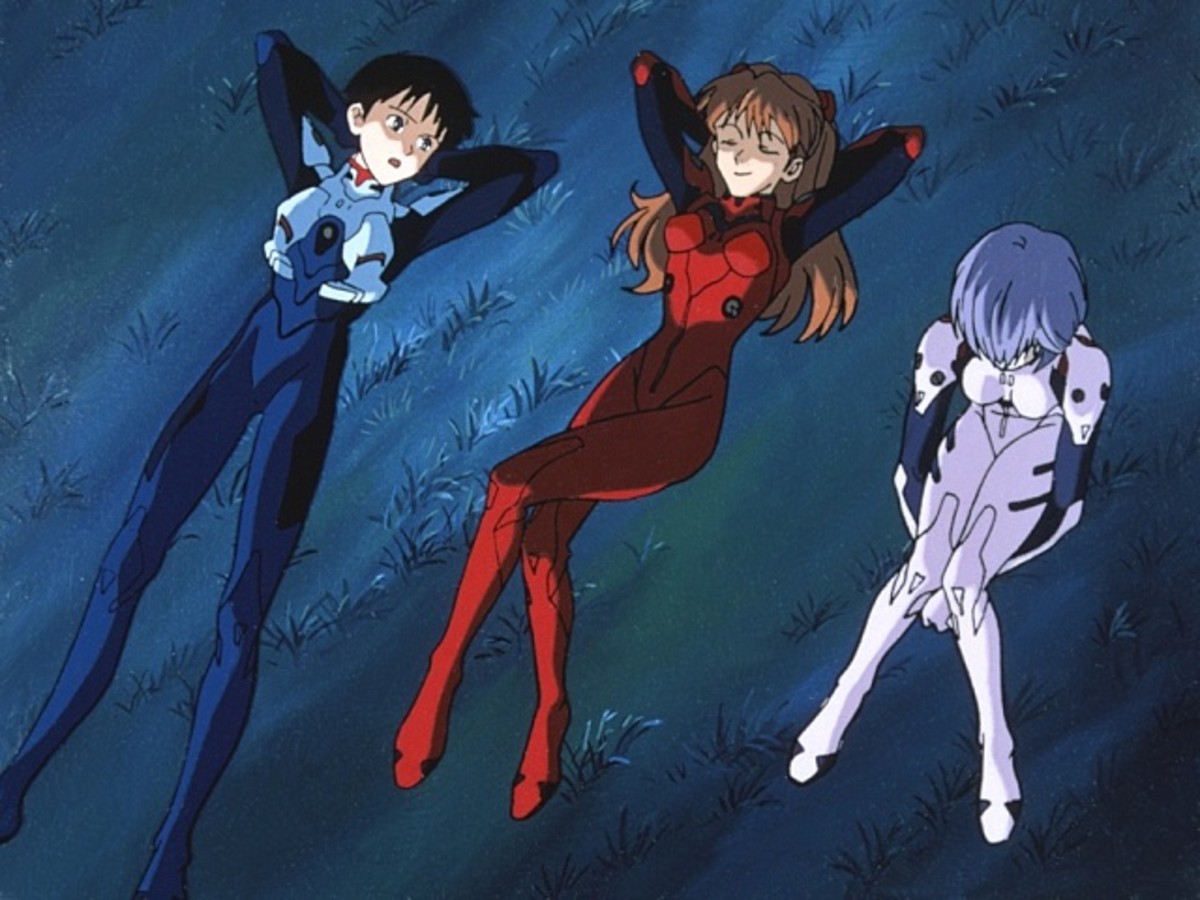
“Neon Genesis Evangelion” is a seminal anime series that has left an indelible mark on the medium, renowned for its complex narrative, psychological depth, and profound exploration of existential themes. Created and directed by Hideaki Anno, the series originally aired in 1995 and quickly became a cultural phenomenon, sparking widespread debate and analysis among fans and critics alike.
Set in a post-apocalyptic world where humanity is under constant threat from mysterious beings known as Angels, “Neon Genesis Evangelion” follows the story of Shinji Ikari, a reluctant teenager who is recruited by the shadowy organization NERV to pilot a giant bio-mechanical robot called an Evangelion.
As Shinji and his fellow pilots—Rei Ayanami and Asuka Langley Soryu—battle the Angels to protect humanity, they confront their own inner demons and grapple with questions of identity, purpose, and the nature of existence.
As the series progresses, it becomes increasingly clear that the true conflict lies not just with the Angels, but within the hearts and minds of the pilots themselves. As secrets are revealed and allegiances are tested, Shinji and his comrades must confront their deepest fears and insecurities in order to save humanity from annihilation.
At its core, “Neon Genesis Evangelion” is a deeply philosophical work that explores a wide range of existential themes, including loneliness, alienation, and the search for meaning in a chaotic world.
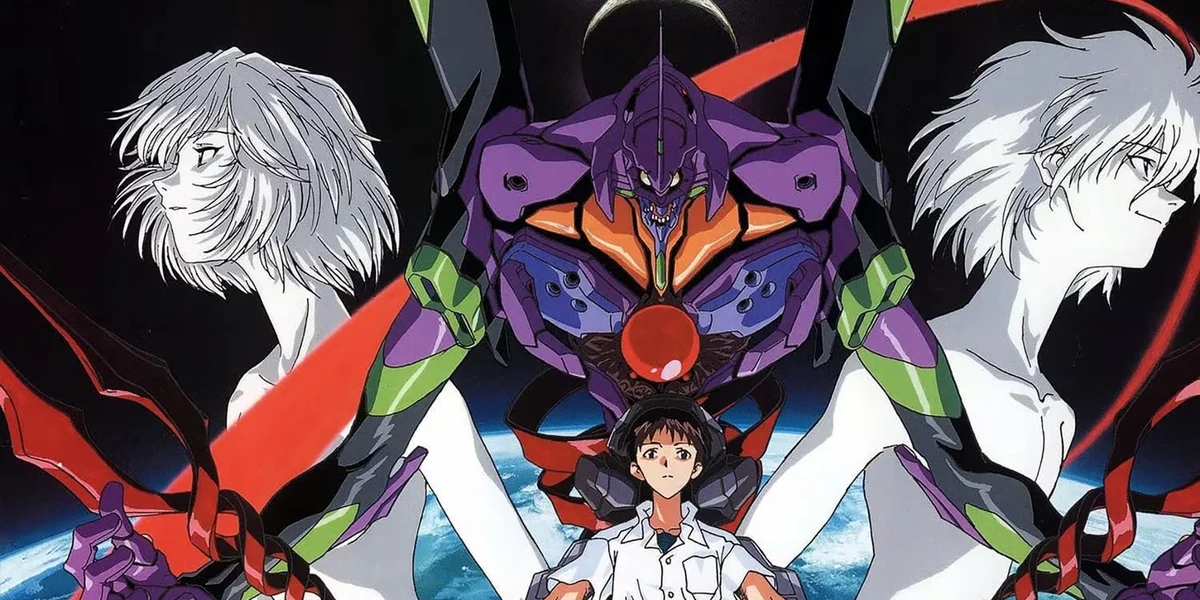
Through its surreal imagery, intricate symbolism, and psychological depth, the series goes into the complexities of human emotion and the nature of consciousness, challenging viewers to confront their own assumptions and beliefs.
The narrative also grapples with themes of trauma, identity, and the impact of parental abandonment, as the characters struggle to come to terms with their pasts and forge their own paths forward.
Whether it’s Shinji’s quest for acceptance, Rei’s search for self-identity, or Asuka’s battle with her inner demons, “Neon Genesis Evangelion” presents a compelling exploration of the human condition and the universal desire for connection and understanding.
Central to the series is its ensemble cast of complex and deeply flawed characters, each with their own struggles, motivations, and traumas. Shinji Ikari, the reluctant hero thrust into the role of Evangelion pilot, serves as the emotional core of the narrative, grappling with issues of self-worth and existential despair as he confronts the horrors of war.
Rei Ayanami, the enigmatic and emotionally detached pilot of Unit-00, embodies themes of identity and self-sacrifice as she wrestles with her own origins and purpose. Asuka Langley Soryu, the brash and headstrong pilot of Unit-02, represents the effects of childhood trauma and the search for validation and belonging in a world gone mad.
Supporting characters such as Misato Katsuragi, Ritsuko Akagi, and Gendo Ikari add depth and nuance to the story, each with their own hidden agendas and moral ambiguities. The intricate relationships and dynamics between the characters drive much of the narrative tension, as alliances shift and loyalties are tested in the face of an impending apocalypse.
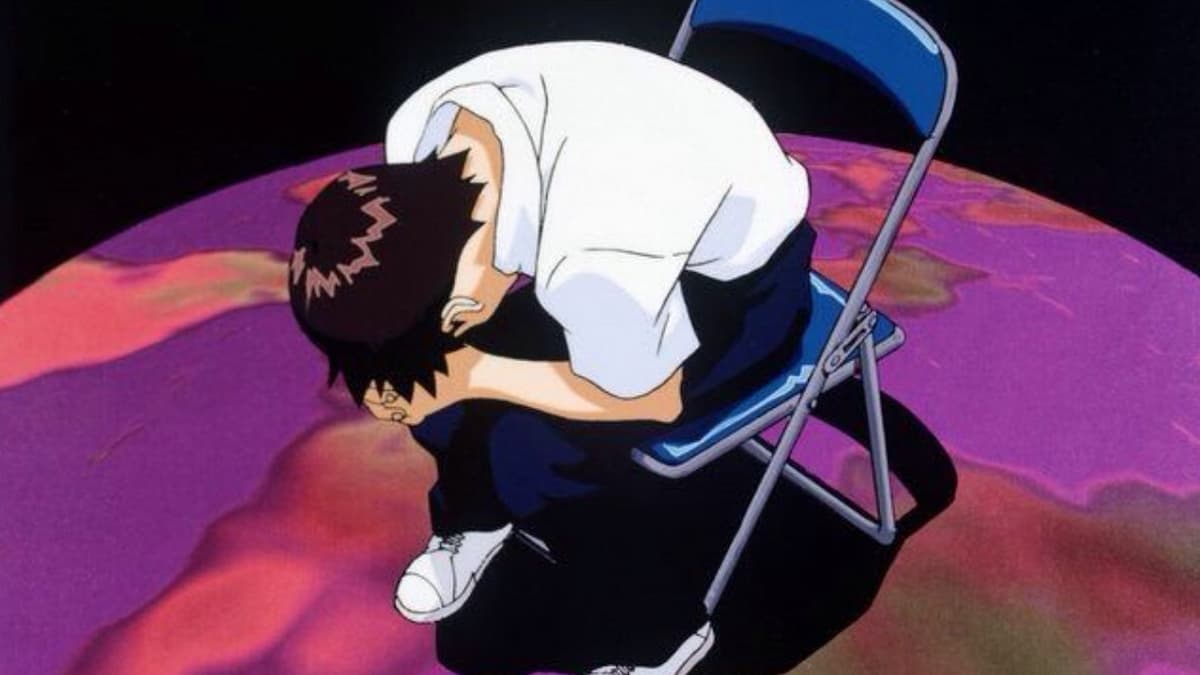
Visually striking and artistically ambitious, “Neon Genesis Evangelion” features stunning animation, surreal imagery, and innovative direction that push the boundaries of the medium. From the fluid mecha battles to the introspective character moments, the animation brings Anno’s vision to life with breathtaking precision and attention to detail.
Complementing the visuals is a haunting soundtrack composed by Shiro Sagisu, featuring a mix of orchestral scores, ethereal vocals, and electronic beats that enhance the mood and atmosphere of the series.
From the iconic opening theme “A Cruel Angel’s Thesis” to the evocative “Thanatos,” the music of “Neon Genesis Evangelion” adds depth and emotion to the narrative, elevating its impact and leaving a lasting impression on viewers.
Since its release, “Neon Genesis Evangelion” has achieved legendary status within the anime community, inspiring countless imitators and influencing a generation of creators. Its thought-provoking narrative, complex characters, and innovative animation techniques have earned it a place in the pantheon of great works of art, revered by fans and critics alike for its enduring impact and cultural significance.
Neon Genesis Evangelion is a groundbreaking anime series that defies easy categorization, pushing the boundaries of storytelling and animation to create a deeply immersive and thought-provoking experience. With its exploration of existential themes, richly drawn characters, and stunning visual style, it remains a timeless masterpiece that continues to grab and challenge audiences to this day.
1. Kaiju No. 8
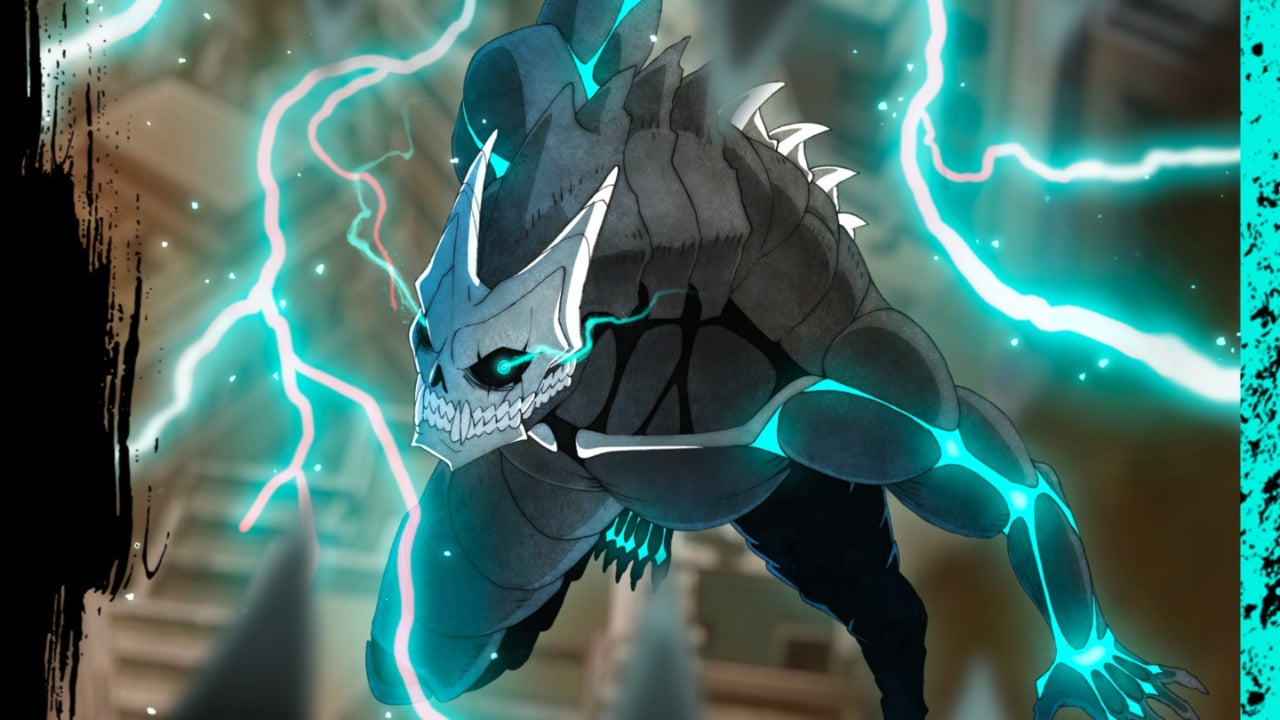
Airing in Spring 2024, Kaiju No. 8 shares striking parallels with Attack on Titan. Both series feature protagonists who, as children, suffered traumatic losses at the hands of colossal monsters, driving them to dedicate their adult lives to eradicating these creatures. Additionally, both main characters gain the ability to transform into variations of these monsters, adding a layer of complexity to their struggles.
Despite these similarities, Kaiju No. 8 distinguishes itself as more than a mere clone of AoT. Protagonist Kafka possesses a vastly different personality compared to Eren, characterized by a more comedic demeanor. Furthermore, Kafka finds himself navigating the challenges of being a cadet in his early thirties, grappling with vulnerabilities and the need to conceal his transformation.
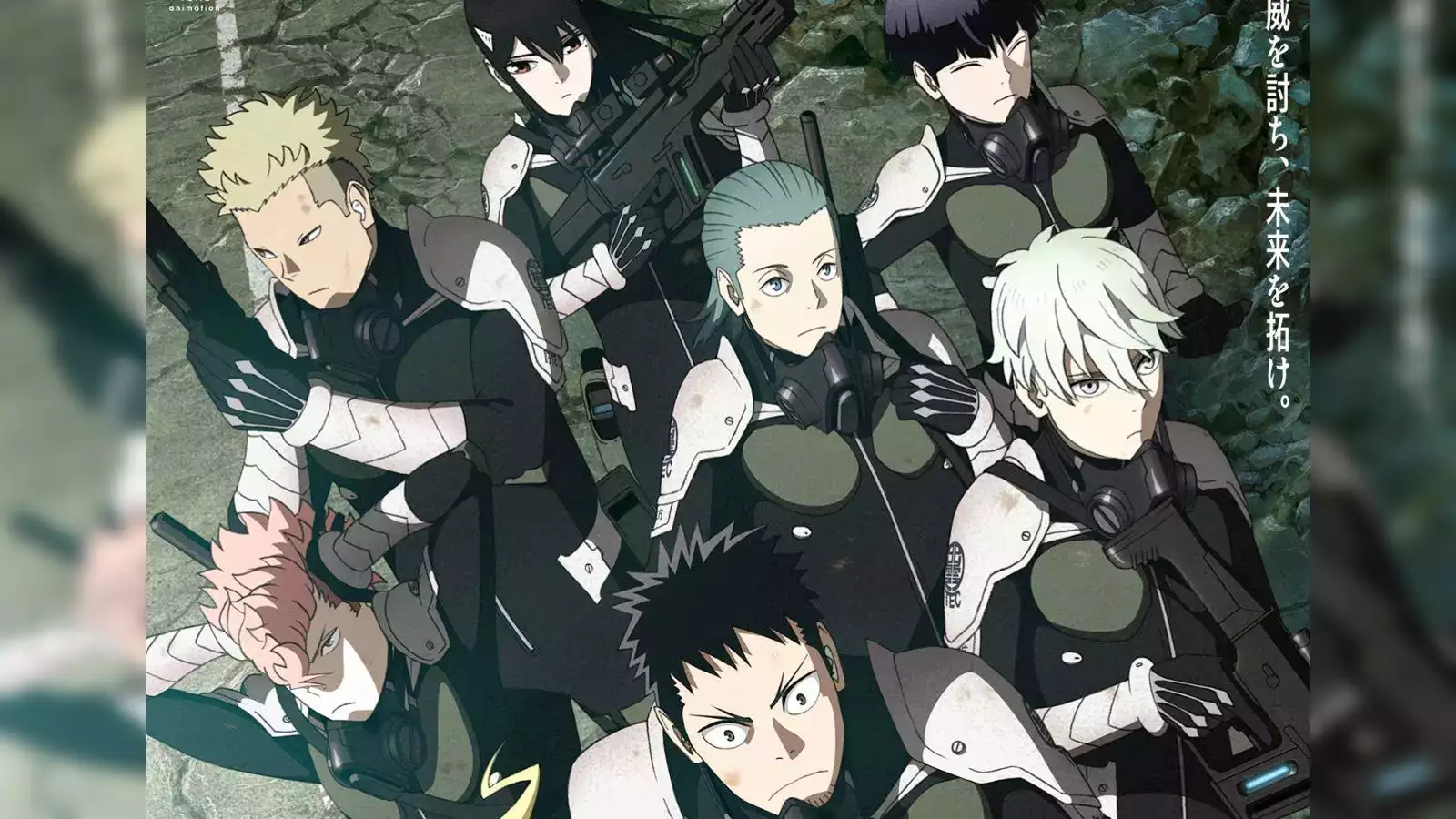
Kaiju No. 8 is a relatively new manga series that has quickly garnered attention and acclaim within the manga community for its unique premise, engaging characters, and thrilling action sequences. Created by Naoya Matsumoto, the series debuted in 2020 on the Shonen Jump Plus digital platform and has since gained a dedicated fanbase for its fresh take on the kaiju genre.
The story is set in a world where humanity is under constant threat from giant monsters known as kaiju. The protagonist, Kafka Hibino, is a low-ranking member of the Defense Force, an organization tasked with combating the kaiju menace using advanced technology and weaponry. Despite his humble position as a janitor, Kafka dreams of becoming a member of the Combat Division and fighting on the frontlines against the kaiju.
However, Kafka’s life takes an unexpected turn when he is exposed to a mysterious substance during a kaiju attack, granting him incredible powers and transforming him into a humanoid kaiju hybrid known as “Kaiju No. 8.” Now, Kafka must navigate the dangers of his newfound abilities while also contending with the machinations of his superiors and the ever-present threat of the kaiju.
As Kafka joins forces with his childhood friend and fellow Defense Force member, Mina Ashiro, and their charismatic captain, Hoshina, he goes on a journey of self-discovery and redemption, determined to protect humanity from the kaiju menace and uncover the truth behind his transformation.
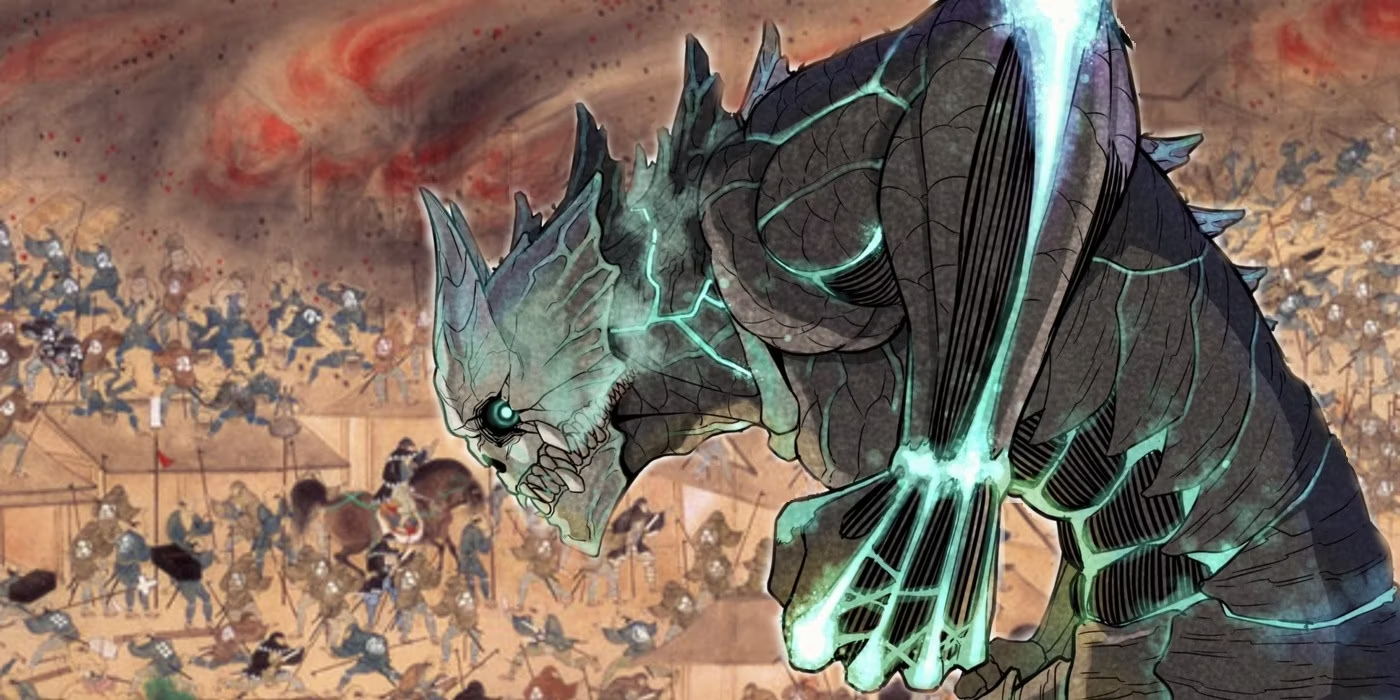
At its core, “Kaiju No. 8” explores themes of identity, purpose, and the nature of power. Through Kafka’s journey from a lowly janitor to a formidable kaiju hybrid, the series goes into questions of self-worth and the search for meaning in a world beset by chaos and uncertainty.
Kafka’s struggle to reconcile his human and kaiju sides, as well as his desire to protect those he cares about, serves as the emotional heart of the narrative, resonating with readers on a personal level.
Moreover, the series examines the consequences of unchecked ambition and the dangers of wielding power without responsibility. As Kafka grapples with the consequences of his actions and the choices he must make to protect humanity, he confronts the moral complexities of his newfound abilities and the sacrifices required to fulfill his duty.
Central to the series is the dynamic relationship between Kafka Hibino and his comrades in the Defense Force, each with their own strengths, weaknesses, and motivations.
Kafka himself is a relatable and compelling protagonist, driven by a sense of duty and a desire to prove himself in the face of adversity. His journey from an underdog to a hero resonates with readers, as they root for him to overcome the odds and unlock his true potential.
Mina Ashiro, Kafka’s childhood friend and fellow Defense Force member, provides a strong and capable foil to Kafka’s impulsiveness, serving as a voice of reason and a source of emotional support.
Captain Hoshina, the charismatic and enigmatic leader of the Combat Division, adds depth and intrigue to the story, as his true intentions and loyalties remain shrouded in mystery.
Supporting characters such as Vice-Captain Reno and Chief Nakagawa round out the cast, each with their own quirks and personalities that contribute to the series’ world.
“Kaiju No. 8” features dynamic and detailed artwork that brings its world to life with vivid clarity and energy. From the towering kaiju to the high-tech weaponry of the Defense Force, the manga’s visuals capture the scale and spectacle of the battles with breathtaking precision.
Naoya Matsumoto’s dynamic panel layouts and kinetic action sequences keep readers on the edge of their seats, while his expressive character designs convey a wide range of emotions and personalities.
Moreover, the series maintains a brisk pace that keeps readers engaged from start to finish, with each chapter delivering new revelations, twists, and turns that propel the narrative forward. The balance of action, drama, and humor ensures that “Kaiju No. 8” remains a consistently entertaining and engaging read, with no shortage of surprises along the way.
Since its debut, “Kaiju No. 8” has received widespread praise from both fans and critics alike, with many lauding its fresh take on the Kaiju genre, compelling characters, and dynamic artwork. The series has quickly become one of the most popular titles on the Shonen Jump Plus platform, attracting a diverse and dedicated fanbase from around the world.
Kaiju No. 8 is a thrilling and imaginative manga series that breathes new life into the kaiju genre with its engaging story, compelling characters, and stunning artwork. With its blend of action, humor, and heartfelt emotion, it stands as a testament to Naoya Matsumoto’s talent as a storyteller and artist and promises even greater things to come in the future.
Memes of the Day
Uradoori no Nukemichi by Nukemichi
Danbooru 4793418
Adam’s Sweet Agony
Pixiv 118734333#1

